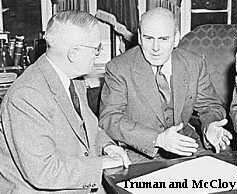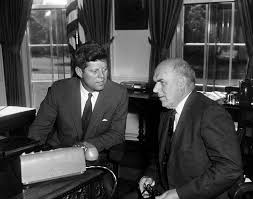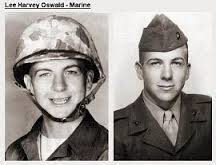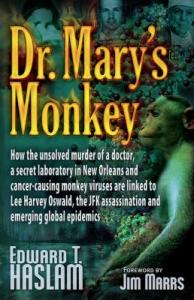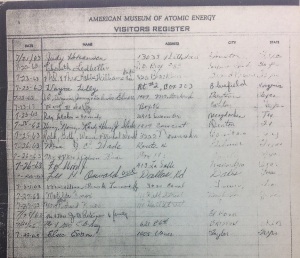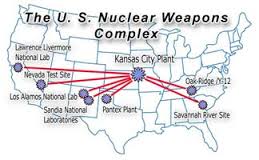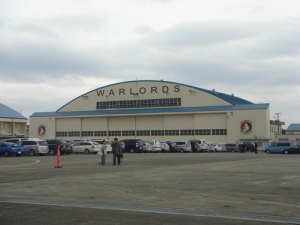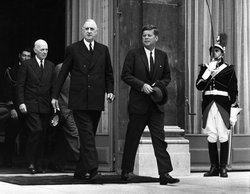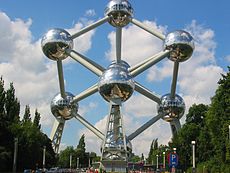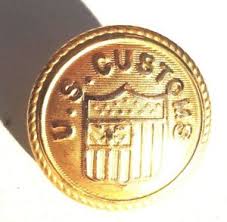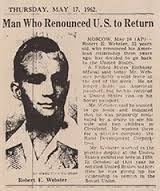Twenty-two years later, returned from Europe on a junket to the Paris Peace convention as a newly minted banker with Kuhn Loeb Company, Lewis Strauss wrote a poem “For Mother” saying, “the blood of Maccabees runs in my veins and courses hot past throbbing temples calling me to rise and smite the foes of God and Righteousness” [p49, No Sacrifice Too Great]…”Strauss always believed that his life embodied some plan of God’s…[p22] As he grew toward that ministry in the ’30s, New York’s Temple Emanu-El made him their president, a member scriving “The Jews of the world are in a state of war. Lewis Strauss is our wartime president.” [p55, ibid.]
Rosa L. Strauss from Richmond, VA, may have been by her son’s side as he fulfilled her great ambition for him. The historical record is clear that she died of cancer in 1935, yet in one of Edward Teller’s possibly famous indiscretions, Teller told a pair of his own biographers about meeting Strauss’s mother after a speech at the Temple Emanu-El in 1948, the year Strauss resigned his 10-year wartime presidency there. The recollection was vividly made by Teller in the 1976 book Energy and Conflict who seemed amused by the incident. Mrs. Strauss wanted so much to introduce the physicist to her son, the president. Teller and Strauss had already become great allies in the battle to build H-bombs. Was Teller grossly indiscreet in the wake of Lewis Strauss’s passing (’74), or does the record of Rosa Strauss’s 1935 cancer death provide the crucially public motive for her son’s indefatigable activity as a cancer fighter? The motive was to impel the transfer and import of pre-weapons technology, radioactive substances like radium, and the scientists themselves. In one of the most obscure references to Strauss, he was also tersely noted as a member of a secretive medical research group called the Maccabee Club, presumably unrelated to any other known or traceable group by that name. The medical Maccabees remain a mystery.
Young Strauss held his hospital presidency for 8 years or longer (1917-1925), but his experience on the job is no more than a dot in an historical document issued by the Montefiore-NYU medical complex that came to absorb the hospital. Were it not for a minor notation, Strauss’s years at the HJD would be rendered invisible. And those were boomtimes. The Frauenthals’ orthopedic business increased so greatly that a new 8-story building was needed with an entire floor (at the top) dedicated to X-ray/radiology. Strauss was the documented leader during this expansion. Not bad for a young man whose personal interests were “physics and photography”.
In 1917, director of the Rockefeller Institute for Medical Research (RIMR), Simon Flexner, had procured the first experimental polioviruses from dead post-Black Tom polio victims. The virus type was dubbed “mixed virus” (MV, ‘mixed’ in the brains of living monkeys), a dangerous neurotrope that frightened many of the lab workers who came in contact with it. HJD personnel were accustomed to sharing the labs at the RIMR, which today bills its founding mission as the study of poliomyelitis and the pasteurization of milk. HJD became a renown polio center, perhaps the only polio hospital in the world at the time; Strauss was part of it, and they were well placed to know of polio’s significance as a radiation-induced disease that can emerge months or years after irradiation. The poliovirus made in labs has been called “the perfect human off-switch” and a “guided missile headed straight for the brain”.
If I had to guess about the medical Maccabees, who they were and what interested them, I wouldn’t need to look further than the HJD and RIMR, a force combination of Rothschilds and Rockefellers. A last note on the Hospital for Joint Diseases here concerns the resident polio expert Henry Frauenthal after this WWI timeframe. Not long after Lewis Strauss resigned in 1925 and signed up for Naval Intelligence, on March 11, 1927, Henry Frauenthal plunged to his death from the top of the hospital and Clara Heinsheimer Frauenthal was commited to an asylum for the rest of her life.
“..Less than a month after he first reported to the Food Administration [May 1917], Lewis Strauss became the private secretary to Herbert Hoover –‘the Chief’ as his closest subordinates called him,” ascending in a subterfuge that got the former secretary fired, “thus opening the job Strauss wanted.” [p13, No Sacrifice Too Great]
These were not the only methods studied and adopted by Strauss. “Two years with Hoover not only led smoothly to Strauss’s job with Kuhn Loeb but left their mark on Strauss’s personality as well. A loner since his shoe-selling days [after highschool], Strauss now hid himself further behind a shield of coldly polite formality very much like Hoover’s own…. Strauss also found in Hoover a model of impatient leadership, unwilling to compromise, who bossed rather than led. Like him, Strauss assumed that once he had thought a question through to a conclusion..others must follow simply because he was right. This..would carry him ahead quickly in banking.” [p27, No Sacrifice Too Great] But earlier, before he had congealed in his Chief’s style, and about to leave for Britain on the first mission of the USFA, “Felix Warburg called on him… Warburg told Strauss..Hoover’s private secretary could perform a great service to his people… Strauss leapt at the opportunity…[p16, ibid.]..and he also saw that if he did his work well, he could not fail to impress Warburg…[p17] Strauss had agreed to serve the JDC [Joint Jewish Distribution Committee]..before he left New York. He became administrative coordinator, trouble shooter, and financial agent for a network of JDC workers who fanned out into the cities of Warsaw, Prague, Vienna, and the surrounding countryside…[p23] All cables from the JDC headquarters in New York passed through his office, as did reports from JDC agents in the field. Strauss located surpluses in the depot of the U.S. Army, organized transportation, and arranged for payment… In addition, under the auspices of the JDC, Strauss..fought against overt anti-Semitism...[p24]…Strauss’s work for the Joint Distribution Committee led directly to his next career. Felix Warburg..and Harriet Loewenstein, the head of the JDC’s team in Europe, saw a bright future for the intelligent, ambitious young man. They thought about bringing him into their firm, Kuhn Loeb & Co, where Warburg was a partner and Loewenstein an accountant.” [p26, No Sacrifice Too Great]. Mortimer Schiff, on Red Cross business in Paris during the 1919 Versailles negotiations, delivered the offer.
At the time, Lewis Strauss was living with his “uncle” Oscar Straus and “aunt” Sarah in their Paris mansion, rescued from the “elegant Hotel Crillon” where the lesser staff legations were housed along with the 200-person entourage of Colonel Edward Mandell House. “Oscar and Sarah..took care of him like blood relatives… They treated him like a son, and he relished the relationship. [p21] The Strauses took him to museums, horse races, and the opera, showing him the rewards enjoyed by those who could afford them, and they stimulated his ambition for money. [p22, No Sacrifice Too Great] Meanwhile, “Europe was desperate.“
On this second and long leg of the mission in Paris, while Strauss was flexing his cultural muscles with the Strauses and running the operations of the JDC, his daily tasks were focused on the post-war work of the American Relief Administration (ARA) which recast the wartime USFA into a reconstruction project. The USFA ceased to exist upon the signing of the armistice, November 11, 1918. “Hoover established the ARA, like the Food Administration, without organization charts or ponderous bureaucracies. He..found a way to staff the ARA cheaply by using American soldiers..who could not return..because of the shortage of ships. He took on 2,500 men..paid by the army and navy and hence cost the ARA nothing. Hoover organized them..with a simple mandate: ‘Set up the machinery of economic rehabilitation.’…The ARA rebuilt and managed a railroad system…cleared and opened ports, canals, and the Danube River; and..stepped in to operate the mines on a supranational basis. When typhus began to spread..killing 100,000 people a week, the ARA set up a containment line, stopped movement..across it, and then sent delousing teams..to stamp out the epidemic… Strauss worked at the center of the ARA. From the original two rooms at the Hotel Elysee-Palace the headquarters grew to fifty offices… As in Washington, Strauss controlled access to the Chief, drafted letters, and supervised execution of the Chief’s orders.” [pp 18-19, No Sacrifice Too Great] He even participated in high-level doings: “Strauss spent some time in conferences with President Wilson and other key officials” [p21]. “Strauss served as intermediary for a diplomat from Finland, Rudolf Holsti…Strauss became Hoslti’s benefactor and Finland’s champion.” [p20] “.. the country of Finland, which he..helped establish in 1919.” [p60, ibid.] Are Finnish schoolchildren taught that Lewis L. Strauss is a founding father of their country? It may have an unappreciated significance to Americans that many of the anti-communist Russians who banded together in Dallas Texas and extended their friendship to Lee and Marina Oswald had originally been funneled through Finland on their flight to the United States.
“Strauss joined Kuhn Loeb at the perfect time to make a fortune quickly.” [p29, No Sacrifice Too Great] And “before the end of 1919 Herbert Hoover began a run for the Presidency.”[p30, ibid.]
__________________________________________
Kuhn, Loeb & Co. started out in Indiana as a dry goods merchant, trader, pawn, and promissary note exchange, establlished in 1867 as the firm of Kuhn, Netter, Loeb and Wolff. In 1885 Solomon Loeb’s son-in-law, Jacob Henry Schiff, bought out Abraham Kuhn for proprietary control and became president.
Kuhn Loeb put the big money on railroads; e.g. Chicago and Northwestern, Pennsylvania, Chicago Milwaukie & St, Paul.
In 1901, with Kuhn Loeb funding, Edward H. Harriman “famously battled James Jerome Hill and J.P. Morgan to acquire control control” of the Union Pacific Railroad. Kuhn Loeb “also joined a partnership with Rockefeller in 1911 to gain control of [Morgan’s] Equitable Trust Company which was later to merge and become Chase Bank.” Incidently, in 1911, the Equitable Building in New York had a fire that burned the Union Pacific’s records.
But turning the clock back to Kuhn Loeb’s financial rise reveals its central role in the founding of Marxist Communism: “Jacob Schiff even in 1890 organized and financed training for Jewish revolutionaries from Russia. It was B’nai B’rith..that planned the instruction for those training courses.” [p141, Under the Sign of the Scorpion, by Juri Lina] “From 1890, the First of May..[became] the date when communists and socialists across the world celebrate under Rothschild’s red flag, which symbolizes the permanent revolution.. [p86]…On the 31st of October, Vladimir Ulynov [Lenin] arrived in the capital St. Petersburg, where he began his subversive activity… In March 1898, the leading Jewish social democrats gathered in Minsk..and propagated the founding of a Zionist state. [p100] …Jacob Schiff…a minion of the Rothschilds, took care of the contacts between the revolutionary movement in Russia and the B’nai B’rith. (ref. Gerald B. Winrod..) [p136] The [Jewish] war began with a Japanese attack on Port Arthur (now Lushun) on the 9th of February 1904… All possibility of credit was shut off to Russia while Japan had unlimited credit. The most important Jewish loanshark, Jacob Henry Schiff in the United States..supported the Japanese military forces with a loan of $200 million dollars. [p139] …In December 1911, the American president William Howard Taft nullified the Russo-American trade agreement. [p149] In the archives of the State Department there is a document, No. 861.00/5339, which reveals how Jacob Schiff, who was very influential..within..B’nai B’rith, and his companions Felix Warburg, Otto Kahn, Mortimer Schiff, Isaac Seligman, [Jerome Hanauer] and others had made plans as early as 1916 to overthrow the Russian Tsar. [p151] …During the First World War…Trotsky lived in France…[then] was deported to Spain..[and] sent away to the United States of America. He landed in New York on January 13, 1917. [p150]…Some powerful forces had exactly the same interest in using the revolutionaries. It was primarily the American International Corporation, with John Pierpont Morgan Jr. (1867-1943) at the head, who tried to gain control of those international..adventurers… It was above all Jacob and Mortimer Schiff, Felix Warburg, Otto H. Kahn, Max Warburg, Jerome J. Hanauer, Alfred Milner and the copper family Guggenheim who financed the Bolsheviks…Two further names are mentioned in [the State Dept.] document: Max Breitung and Isaac Seligman. All those people were Jews and freemasons.” [p182, Under the Sign of the Scorpion]
“The pace of banking then was slow. Each deal tooks weeks to complete…and Strauss found many long days with little to do but write a single letter that moved a developing negotition forward a small step… Luckily, he could spend the slow time learning..from two of the masters. Partners Otto H. Kahn and Jerome J. Hanauer carried the load for Kuhn Loeb in the twenties, and Strauss was..apprenticed to them. Kahn was flamboyant… [p29, No Sacrifice Too Great] Hanauer, on the other hand, was quiet, patient, and generally unnoticed; everything about him was carefully in place, and..he looked after the details of the business.” [p30, ibid]
“As one of the most eligible Jewish bachelors in New York, Strauss found no end of social life. He centered his activities on ‘Uncle’ Oscar and ‘Aunt’ Sarah Straus, his hosts in Paris, and their circle of friends.” [p33, ibid]
The Strauss family tree is another area in which privacy (obfuscation or blankness) prevailed. Lewis Strauss named no other family than his parents, brother, and son. He mentioned a “rich uncle in New York”. The biographer included his grandparents and acknowledgement to LLS’s descendents. Going further is a matter of guesswork, however, if records of correspondence are any guide, Lewis Strauss had made significant contact with the extended Straus clan (alternately spelled with two ‘s’s) as a teenager, several years before his meeting Oscar and Sarah in Paris. The families had much in common with both patriarchs arriving as latecoming “48”ers, fleeing the Marx-inspired Revolutions of 1848. They came from the same region south of Frankfurt (between Darmstadt and Karlsruhe) and started out as dry-goods peddlers with “horse, buggy, and benefactor” in the rural countryside until they each afforded purchasing a store. Leopold Strauss (Lewis’s grandfather) settled in Culpeper Virginia. Lazarus Straus (Oscar’s father) settled in Talbotton Georgia, coming to the U.S. under slightly different circimstances –at an older age than Leopold, with a wife and five children. Leopold was about 18 years old and unattached; he married his benefactor’s daughter, Caroline Lowenthal, and raised 11 children.
It’s a plausible theory that Leopold and Lazarus were brothers, descended from large merchant families of traveling salesmen who sent their offspring into the countryside to stake out territories for themselves and their own families. The greater Strausses from southwest Germany, relocated to the U.S. between 1840 and 1860 would have been “cousins” and second cousins. They are still painstakingly rediscovering each other today from meager stories of the past. Back then, some would have fled the revolutions as armed combatants deliberately veiling their origins –perhaps, especially, Leopold Strauss.
Lewis Strauss may have been expected to court a suitable “cousin” when he came of age– he certainly appeared to be “courted” by the Strauses. His mother, of course, was not a Strauss. She held a high ambition for the “right” marriage for her son, a dynastic marriage, fulfilled to her pleasure when Lewis L. Strauss married Alice Hanauer in March of 1923. Nonetheless, important alliances were forged among them. For example, Nathan Strauss collaborated with Lewis Strauss, Samuel Untermeyer, and journalist Herman Bernstein to bring a high-profile defamation/libel suit against Henry Ford; Ford’s crime– publishing the Protocols of the Elders of Zion in the Dearborn Independent. In Bolshevik Russia, possession of the Protocols meant getting shot on sight. The acceptable Soviet reading material, it seems, was a copy of Colonel E.M. House’s “Philip Dru, Administrator.”
Of greatest import was the role he was being groomed to fill, following in the footsteps of Jacob Schiff. Certainly, in time, he would have been expected to exercise the same audacious kind of authority if not by the same means. “Jacob Schiff declared publicly in April 1917 that it was through his financial support that the revolution in Russia succeeded….[p189, Under the Sign of the Scorpion]….The order to murder the Tsar and his family actually came from New York…Yakov Sverdlov..had received orders from Schiff to liquidate the Tsar and his entire family.” [p276, ibid.]
[p97] “As a boy, photography had been a major interest…”
[p98] “In 1922, Everett Somers [military aide]..introduced two young musicians, Leopold Mannes and Leopold Godowsky… [They conceived a method of making photographs in color with one exposure on a single film..using an ordinary camera… I arranged for the necessary money to pay for patent applications and attorney fees and to rent and staff a small laboratory. The Eastman Kodak Company co-operated by furnishing required sensitizers, dyes, and other materials, but brushed the process itself aside… [until] I decided to go over the head of [Kodak] officers.. and traveled to Rochester with Sir William Wiseman [of British Intelligence], one of my associates, ..to George Eastman himself.. which resulted in marketing the product called Kodachrome. Annually it earns many millions for the Kodak Company and until the patents finally expired in 1952, was highly profitable to the young inventors and to all concerned.”
>>>George Eastman (1854-1932) committed suicide by a gunshot to the heart on March 14, 1932
…”Another decision was to back a young inventor, Edwin H. Land, who was introduced to me..by his camp counselor, Julius Silver… Land impressed me at once, a fact of which I am proud… Land has many inventions to his credit.. some of them of a classified character… He is best known perhaps for the Polaroid Land Camera.”
*
Eastman Kodak was one of the great corporate success stories of the 20th century and George Eastman was in the top 25 of richest Americans by WWI. Kodak’s early commercial success was built on the production of x-ray film plates. In 1912, Dr. C.E. Kenneth Mees, “acquired” through merger with a British firm and made vice-president, established the Kodak Research Laboratories. Mees was a pioneer in
aerial photography technology, and by his efforts Kodak participated in defense work using a Rochester lab on the Genesee River called “
Hawkeye“. In the early 1920s, the Hawkeye plant was making the Barnes camera (developed by plant manager F.W.Barnes), the first 16mm movie camera.
http://www.city-net.com/~fodder/16mm/film.html Kodachrome would become Kodak’s stock commercial movie film. In time, Hawkeye produced classified aerial maps for the NRO and CIA (i.e.Project Bridgehead) and prepared the images of Soviet missiles in Cuba that were shown to JFK in October of 1962.
The Zapruder film copy that came into the hands of Navy photo analysts on the weekend of JFK’s assassination is said to have been processed
first by Kodak’s Hawkeye works
.
Two years before Strauss met Godowsky and Mannes (1920) George Eastman funded the creation of the
Rochester University School of Medicine and Dentistry and its affiliated Strong Memorial Hospital under the courtship of Abraham Flexner: “
one of the most astute medical statesmen and administrators the United States has ever produced–Dr. Abraham Flexner, at the time secretary of the Rockefeller General Education Board.” http://www.lib.rochester.edu/index.cfm?PAGE=2326 Abraham Flexner was not a doctor though his older brother Simon Flexner had earned the title through a one-year medical course in Louisville Kentucky, the very kind of school that the Flexners sought to shut down. Abraham, the educator, wrote a national medical school survey report called the “Flexner Report” (1910), used by the AMA, Carnegie and Rockefeller foundations to leverage compliance to ‘standards’ in exchange for funds. The new Rochester school was to be a model of Flexnerian innovation emphasizing research. During WWII, Rochester M & D and Strong Memorial were the headquarters of Manhattan Project human medical experiments with radionuclides and fluorine.
>>>
Grand Rapids, Michigan was the first U.S. city to institute fluoridation…Gerald R. Ford was Grand Rapids’ congressional representative from 1949 to 1973 ..(and also on the Warren Commission)…[read more about fluoride http://polioforever.wordpress.com/fluoride/]; a third Flexner brother, Bernard Flexner, lawyer and protege to Kuhn Loeb lawyer Louis Brandeis, was a leader of the 1917 Red Cross Mission to Russia and Roumania and 1922 founder of the Palestine Economic Corporation.*
The Strange Career of Hoover
*
Herbert Hoover’s “
famed mining career began in the goldfields of western Australia (‘Sons of Gwalia’ gold mine) in 1897 where he also co-founded the Zinc Corporation (Rio-Tinto-Zinc Ltd) in 1905” –so begins a blurb on Hoover written two years ago in a post called “Atomic Power, No Contest” about the early preparations made in the 1920s for World War II and the coming atomic bombs.
https://jenniferlake.wordpress.com/2010/11/08/atomic-power-no-contest/ At the time, I knew little about the jurisdiction of the Secretary of Commerce, but it was still clear to me that Hoover was constantly operating outside of his jurisdiction, focused on local and regional power utilities, for example.
Within his jurisdiction, however, were unique opportunites relating to trade and traffic. He took office during an agricultural depression brought on by WWI, bearing directly on the Food and Relief Administration programs of overproduction, capitalization, and fixed pricing. Hoover’s time as Sec. of Commerce and then President also ranged over nearly the entire period of Prohibition, and some of this activity was taken note of by journalists as Hoover’s unpopular presidential policies in the deepening Great Depression stirred national discontent. [reference this essay on Hoover’s presidency
http://www.americanheritage.com/content/wrong-man-wrong-time?page=2]
“
During Hoover’s presidency Strauss played an important role in the illegal use of naval intelligence for a partisan political purpose… On May 21, 1930, Strauss received Commanders Paul Foster and Glenn Howell in his office at the Kuhn Loeb building. Foster, Strauss’s first chief at the Naval Intelligence District, had become a close friend, and Howell was the incumbent chief.” [p41, No Sacrifice Too Great] Strauss told the men that a man named O’Brien was collecting documents about “
unsavory episodes” in Hoover’s past and intended to have them published. ”
‘Strauss is authorized by the President to utilize the services of any of our various secret services,’ Howell believed [and wrote in his personal diary]…
Using as a cover story the premise that foreign agents threatened the United States, Howell enlisted the aid of the man whose office adjoined O’Brien’s… obtained an impression of [O’Brien’s] lock…made a key, and early on a Monday morning quietly entered O’Brien’s office, only to find..O’Brien had moved out with all his furniture and, of course, the documents...” O’Brien was collaborating with Mr. John Hamill, and they did indeed give Strauss the slip and published a book called The Strange Career of Herbert Hoover Under Two Flags. The biographer Richard Pfau continued,”
What this incident showed about Strauss was his willingness to employ the clandestine skills of counterintelligence for a political purpose. He probably justified the illegal activity on the ground that it necessary to protect the presidency. Like Watergate…this was a wanton abuse of power. It shows that for Strauss..no sacrifice was too great, even though it violated the law, if he could convince himself it was necessary for the nations’s security.” [p42, ibid.] The 1930 break-in on James J. O’Brien by the NYC ONI is described here:
“Hoovergate”…”Glenn Howell was no stranger to break-ins and espionage against his fellow citizens. In his 1930 diary he speaks confidently of infiltrating and spying on Communist cells and then arranging for break-ins…” http://www.americanheritage.com/content/hoovergate But there were others: “
This post discusses how Herbert Hoover misused the..powers of his office..to harass a group of authors, including distinguished muckraker Walter Liggett, who were preparing anti-Hoover biographies… Howell relates the harmless subterfuge used to gain access…[but]
Liggett was murdered in a gang-land killing [in front of his wife and daughter]
in Minneapolis in 1935… Shortly after the [American Commission for Russian Famine Relief]
was launched, Mr. Hoover, then Secretary of Commerce,..commissioned..an FBI investigation of Walter W. Liggett… Liggett made his reputation..describing the catastrophic impact of Prohibition on the integrity of law enforcement and local governments… Liggett’s successful newspaper and magazine writing provided the opportunity to publish a book on a long-time interest of his –Herbert Hoover…The prospective book was a hot property… Walter either did not realize or did not care that..detectives were investigating and reporting on him while he worked… Liggett was lured to a hotel with the promise of information and then savagely beaten by..men led by gangster Kid Cann… Finally, on December 9, 1935, Walter Liggett was gunned down by five fatal shots [from]
none other than Kid Cann.”
http://chinamatters.blogspot.com/2006/12/last-of-the-muckrakers-appreciation-of.html
Kid Cann (Isadore Blumenfeld) ” was convicted of violating the Mann Act in 1959 and, after a short prison term, retired to Miami Beach, Florida, where he and Meyer Lansky operated a real estate empire. He was involved in organized crime in Miami Beach and Havana, Cuba, until his death.”
http://en.wikipedia.org/wiki/Kid_Cann
*
“
Hoover’s agricultural program –the showpiece of his 1929 initiatives– ended in fiasco. The Grain Stabilization Corporation stopped buying surpluses..driving the price of wheat catastrophically lower… The farming sector faced ruin…. one-fourth of American farmers lost their holdings –their fields, their stock, their barns and their homes– many of which had been in one family for generations”
http://www.americanheritage.com/content/wrong-man-wrong-time?page=4 “In the summer of 1933…Strauss decided to buy a farm in Virginia… At the severely depreciated prices produced by the Depression, large estates were available for small sums… Strauss also thought he might accept a post in Washington one day… a home within easy reach of the capital would be useful… In July 1933 he bought 1,600 acres near Brandy Station, between Warrenton and Culpeper… In addition, a corner of the land had been a battleground in the Civil War.” [p47, No Sacrifice Too Great]
>>>”Brandy Rock Farm..was..designated as a ‘conservation’ property…The heirs of L.L. Strauss have been paid $30-50,000 annually in government funds …the third largest farm subsidy in the state of Virginia.”
“Strauss..bought an historic estate at Brandywine, Virginia during the 1930′s, from which he ran the notorious Byrd machine for many years, a totalitarian control of Virginia politics which had begun at the turn of the century… [Harry F.] Byrd, with Strauss’ money behind him, became Governor of Virginia… He continued his long association with Byrd during their years together in Washington. When Byrd retired, Strauss became his son’s campaign manager.” –Eustace Mullins
Harry Byrd’s cousin, Texas oilman D.H. Byrd, was the owner of the Texas Schoolbook Depository building and according to Russ Baker’s book (Family of Secrets), D.H.Byrd had formerly employed Oswald’s handler, George DeMohrenschildt. DeMohrenschildt is noted to have been a dealer in uranium.
*
*
Lewis Strauss was born (Jan.1896) just weeks after the news of Wilhelm Roentgen’s first medical x-ray (Dec.1895), taken of his wife’s hand, flashed with excitement throughout the scientific world. Photosensitive glass plates were key to proving the existence of radioactivity and the intrinsic properties of energetic materials. The dogged persistence of Marie Sklodowska Curie in procuring radium, helped by her husband Pierre and friend Henri Becquerel fueled the industrial emergence of a
radium trade by 1903. Parallel developments in radium treatment between the French and Americans was carried on in the U.S. by a New York surgeon named Robert Abbe who brought a supply over from the Curies lab. In that year, 1903, “
Hans Zinsser, who became an American bacteriologist of high academic achievement..wrote his first paper..on the effects of radium on bacteria… The Zinsser family chemical business [dealing in commercial lacquer and paint] was run by Hans’s brother whose daughters, Margaret and Ellen, married Lewis Douglas [Phelps-Dodge]
and John J. McCloy [Black Tom Island lawyer],
respectively.”
http://polioforever.wordpress.com/x-rays/ Marie Curie’s radium was made from a stock of pitchblende found in the uranium waste of the Joachimstal mines. Little is known or said about her sponsors motives, however uranium pitchblende ore was already in use in the U.K as a steel-hardening alloy, shipped to London in 1872 by a British mining agent Robert Pearce who sold his 3-ton cache for $7,500. Pearce found the pitchblende in Gilpin County, Colorado and soon pockets around the Colorado Plateau were yielding high grade ore. By 1911, Colorado ores bearing radium were sent to Pittsburgh for processing and reduction by the Standard Chemical Company, the largest supplier of its time. Radium came on the market in those days at a cost of $150,000 per gram.
Across the pond in
Belgium, a legendary gathering of European physicists was convened for the first
Solvay conference, a colloqium of the brightest minds, including Emil Warburg, Albert Einstein, Mme Curie, Paul Langevin and Ernest Rutherford.
http://en.wikipedia.org/wiki/Solvay_Conference Rutherford, considered the father of the atom, “
had made a classic discovery: The core of the hydrogen atom was blasted from the core of nitrogen. Rutherford had achieved the old dream of alchemy; this was the first time man had accomplished transmutation… In 1904 he had glimpsed a possible way atomic energy might be released… He told [a London lecture]
audience, ‘A mere pound of uranium, on the scale we see possible, might liberate the same energy as burning 100 million pounds of coal. Scientists are working hard to find a way to release this energy at will. Personally I hope they do not succeed until man has learned how to live with his neighbors in peace.” [p52, The Deadly Element, by Lennard Bickel]
It does not take a detective’s eye to follow the early development of atomic energy. Rutherford’s 1904 statement is a clear indicator of the groundbreaking path, known to his fellow conferees. Radium marketed as a medical miracle generated capital, industriousness, and intense scientific interest. It was a like substance and stand-in for all uranium products, including plutonium which didn’t yet exist. Under the auspices of Belgian Relief and the U.S. Food Administration, the assumed contacts were made to corner the radium market with ore from the Belgian Congo: …”We had both [Sengier, president of Union Miniere du Haute Katanga, and Strauss] been connected with Hoover’s Commission for Relief of Belgium in World War I, and our friendship dated from those days” —Lewis Strauss [p317, Men and Decisions] The Union Miniere built an exclusive facility and put its radium on the market in 1922 at lower cost (roughly S100,000-120,000). In the prior year, another assumed advance occurred in which a demonstration of fission was offered to Albert Einstein while visiting Prague (assumed that Einstein accepted and the offer came from Leo Szilard). Einstein was scheduled to travel to the United States with Chaim Weizmann on a Zionist fundraising tour –which he did– and then returned to Prague straight away to arrange a special laboratory where he began working with Szilard. Fission was made possible by the advent of particle accelerators.
Pennsylvania’s Standard Chemical Co., domestic radium supplier, was out of business by 1926 and the Belgians remained unchallenged in the field of radium distribution until the Canadians discovered the Great Bear Lake region in northern Saskatchewan.
*
“..the Canadians..brought in their mines from the distant Northwest Territories in 1931 thanks to ‘flying wheelbarrows’ and bush pilots… [Boris]Pregel said, “
The monopoly of radium which Union Miniere had went on for many years till the Canadians came in with their own material [and] their refinery, Port Hope… they began to sell, to compete with the Belgians. They did it because they didn’t have the necessary distribution channels… practically nobody…”. https://jenniferlake.wordpress.com/2012/01/13/jfk-conspiracy-con-iii/ (Part III
) And practically noboby left records of how the Canadians managed to compete, but the prices dropped according to statements, for the first time below $100,000 per gram.
North of
Rochester New York, across the open water of Lake Ontario, “
Port Hope.. is known for having the largest volume of historic low-level radioactive wastes in Canada. These wastes were created by Eldorado Mining and Refining Co. and its private sector predecessors.”
http://en.wikipedia.org/wiki/Port_Hope,_Ontario Most importantly in this period of the early 1930s, is the continuation of nuclear technology developments in settings of medical research. Hospital labs became fundamental proving grounds for isotopes and particle accelerators, and radium was still the most expensive drug on the market.
*
Lewis Strauss wrote, “Following the deaths of both my parents (in 1935 [not?] and 1937), I became aware of the inadequate supply of radium for the treatment of cancer… the demand was so great that the stock was divided into milligrams. Dr. James Ewing, then director of Memorial Cancer Hospital in New York, told me that if he had enough radium he would construct a ‘bomb’ holding several grams, which he felt might be the answer to the treatment of deeply located cancers.” [p163, Men and Decisions] To this end, Strauss claims to have struck up a relationship with physicists Leo Szilard and his colleague Arno Brasch. From Strauss’s own correspondence records, the exchange with Szilard began in 1934 –significantly the year in which Szilard patented the first known nuclear reactor. Strauss privately arranged to buy a particle accelerator from Brasch through his relative, Isbert Adam, a business broker in Havana Cuba. The ‘surge generator’ and the scientist were both slated for a destination at the Kellogg Radiation Laboratory , part of the California Institute of Technology (Caltech).
Caltech, under the direction of Strauss’s professed ‘idol’ Robert Millikan whose textbook inspired his devotion to physics, was then the center of advanced U.S. study in genetics and aeronautics, ( Guggenheim Aeronautics Laboratory at Cal. Inst. of Tech.(GALCIT) and the new Jet Propulsion Laboratory) headed by Theodore von Karman. Von Karman, himself an Hungarian immigrant, was ‘spiritual father’ to the small group of four Hungarian scientists who were nicknamed the Martians –they were, Edward Teller, Eugene Wigner, John von Neumann and Leo Szilard. Wigner and von Neumann were secured in resident lifetime fellowships in 1930, not long after the Guggenheim Aeronautics lab was created, at a new East Coast counterpart at Princeton, the Institute of Advanced Study [IAS]. Albert Einstein had also been contracted to the IAS in 1930, coming later in 1933.
Princeton’s IAS was founded by “Dr.” Abraham Flexner (same as Rochester Medical) with funding from the Bamberger department store fortune –Lewis Strauss joined its board of directors during WWII and became its chair concurrent to his executive with the Atomic Energy Commission.
The first nuclear technologies then, X-rays and radium, were delivered into the world at the very time of Lewis Strauss’s birth –he may have taken great meaning from it as a talismanic guide in “God’s purpose” for him. Eisenhower’s offer of “permanent chairman” (1958) for atomic energy was merely acknowledgement of what had already been. Virtully every step of this man’s life was in furtherance of achieving the most powerful weapons ever created on behalf of an ancient cult of racist assassins to whom he owed his glory. It is the most salient fact of his existence, and he stopped at nothing for its gain.
*
“
The Congo can best be understood as the private preserve and reservation of Societe Generale [bank]… its influence over the financial houses of Europe was said to have equaled that of the Rothschild family or the J.P.Morgan banking empire” [p44 of the book text of ‘Uranium’;
www.scribd.com/doc/88719832/5/THE-RAINBOW-SERPENT ]…”A substantial amount of uranium has been smuggled out of the Congo in the last decade [since 2000] and the source is almost certainly Shinkolobwe [mine].” [p10 ibid.]
Author
Joseph Conrad wrote about the genocidal atrocities in the Congo committed by the Belgians in his ‘novella’
Heart of Darkness: “
in 1902, Heart of Darkness was included in the book “Youth: a Narrative, and Two Other Stories” (published November 13, 1902, by William Blackwood).[republished in 1917]”
http://en.wikipedia.org/wiki/Heart_of_DarknessWhen
Emile Francqui died (1935)..”
the New York Times memorialized him as the ‘copper king of the Congo’…In 1891 he led an expedition into the Congo and gained it for King Leopold…While [earlier]
consul general at Shanghai, he secured valuable concessions, notably the Kaiping coal mines and the railway concession…” http://modernhistoryproject.org/mhp?Article=FedReserve&C=7.0Lewis Strauss thought to write in his 1962 memoir that after he started his new banking career (9-19-19) and took his relief activities to a higher level, in April of 1920, “about that time, I was reading Joseph Conrad and suffered from troubled dreams of leaky ships, overcrowded with men and foundering in tropic seas.” [p74, Men and Decisions] It was the only instance in the memoir that Strauss mentioned his personal reading material.
*
Radium, and its daughter gas
radon, were added to public drinking water beginning in
1903 according to whistleblower Dr. Albert Schatz, the discoverer of streptomycin. Radium and its mine waste was later packaged and
sold as fertilizer by the Standard Chemical Company, starting in 1911. p
http://polioforever.wordpress.com/x-rays/
*
Joe Kennedy
Joseph P. Kennedy was a ‘friend’ to Lewis Strauss by some accounts although no such relationship is claimed by either camp or demonstrated by any record known to this researcher. Kennedy’s career actions, however, reveal an astute and enterprising sense of sharing in the ‘friendly’ interests among Strauss’s associates. He certainly had their attention from his stellar foray into the movie business through the buy-out of the Film Booking Office (FBO). The movie business, and not bootlegging as the myth persists, made Kennedy’s fortune: “Hollywood studio chiefs in the mid-20s were almost all immigrants, men such as Carl Laemmle of Universal, Louis B. Mayer and Marcus Loew of MGM, and Adolph Zukor of Paramount, men who had started with arcades, nickelodeons, or small theaters… “
JPK’s closest partners in the FBO venture included Louis Kirstein and Guy Currier. Kirstein, who ran the Filene’s department store in Boston, was “a man of many interests” and “one of the outstanding leaders of American Jewry..[as] chairman of the General Committee of the American Jewish Committee… national chairman of the United Jewish Appeal, the leading fundraising agency for..Palestine…[and] he acquired a role similar to that of Jacob H. Schiff and Felix M. Warburg…striving [for] cooperation of all sections within the Jewish community for one common purpose.” Strauss was then, and continued to be, on the executive of the American Jewish Committee.
Acquisition of the FBO, a prolific producer of films itself, poised Kennedy and his partners for a strategic consolidation during a period of great technological change in the business– the sound revolution. They exploited a leadership power vacuum among the companies that made up the Metro-Goldwyn-Mayer network and made a new entity, RKO, with Kennedy’s silent partner, RCA/NBC’s president David Sarnoff. According to Cari Beauchamp, author of the Vanity Fair article and book, in October of 1927 Kennedy met Sarnoff “at the Oyster Bar in New York’s Grand Central Terminal… Kennedy had a studio; Sarnoff had the technical equipment..[and] Telling no one else, they put their heads together and came up with a plan.”
The first approach was an overture from Kennedy to Frank J. Godsol, the president of Goldwyn Pictures. Sometime between 1921 and 1922, Godsol had engineered the ousting of Samuel Goldwyn from his own company –Godsol had a colorful past. He was the son of Russian jewelry dealer in Cleveland who made an undisclosed fortune “in the West” as a very young man, and then expatriated himself to Paris France where he first sold imitation pearls (called Tecla pearls) through exclusive shops and then became a war armaments dealer to the French government.
>>>
Tecla pearls are a ‘trade-marked name for both solid and wax-filled imitation pearls’ made of glass. http://stoneplus.cst.cmich.edu/zoogems/pearls.html ; “[Godsol]
went West while still a boy and amassed a fortune in a few years in Montana. Then he established the Saretecora and Brazilian diamond business that had an amazing success. Later he invaded Europe and launched the Tecla pearl..which enabled the possessors of priceless..pearls to put their treasures in safety deposit boxes and at the same time appear properly jewelled…” [New York Tribune, April 1, 1919
http://chroniclingamerica.loc.gov/lccn/sn83030214/1919-04-01/ed-1/seq-6/ Godsol had only recently survived a scandal and jailing over charges of fraud, profiteering, and special favoritism in a suit involving his brokerage of trucks during World War I where he made at least $1.5 million each year of the war, possibly from the sale of Pierce Arrow vehicles alone. Godsol represented multiple auto companies. It also came out in his trial that Godsol had war-era connections to film-making; accused by prosecutor Alfred J. Decker of employing Benjamin Blumenthal who “was president of..Germanic Official War Films Inc.” and used his station for generating pro-German propaganda. Blumenthal denied “
that pictures..were shown in the interests of Germany.” http://chroniclingamerica.loc.gov/lccn/sn84026749/1918-04-19/ed-1/seq-10 Shortly after Godsol tookover Goldwyn Pictures, it was bought in 1924 by Marcus Loew of Loew’s Incorporated, perhaps the largest theater corporation anywhere.
Marcus Loew was a pioneer in grassroots fundraising for Jewish War Relief (run by Warburgs) through the agency of his theaters. The model was carried through even after Loew’s passing in 1927 (year of the RKO deal) –Loew’s became a staple collections field in the March of Dimes when the funds were dedicated to polio. Joe Kennedy was touching a lot of nerves. His successes in making the movie industry a legitimate and profitable target of investment and his ‘reorganization’ at Goldwyn with the resulting creation of RKO put him on the radar as a man to watch. He played their banking game with undaunted brilliance. Beauchamp wrote,”Kennedy..personally exited the RKO deal with more than $5 million… In 1937, Fortune magazine ran a cover-story profile of Kennedy and credited his time in Hollywood as a major source of his personal fortune.”
Legend has it that Kennedy enriched himself as a rumrunner in the 1920s, though often disputed and demonstrably out-of-character. Kennedy may have walked close to the line, but there’s no evidence that he personally crossed it or encouraged it for his own benefit. He creditably took his movie earnings after selling out to RKO, allegedly before the crash of ’29, and leveraged them into legal distributorships of distilled spirits, positioned to claim an ample market share at the end of Prohibition. These maneuverings for liquor rights brought him into direct competition with Samuel Bronfman, who expected those very same licenses to be his. Bronfman’s venom for Joe Kennedy overflows from the Bronfman family history up to the present.
*
David Sarnoff, in Lewis Strauss’s own words, was a “steadfast friend”. Sarnoff (1891-1971), born near Minsk Russia, emigrated as a boy and landed a job with Marconi Wireless at the age of 15 (1906) and worked his way up. In 1919, General Electric created the Radio Corporation of America in order to acquire Marconi which was a British company, and remained its largest shareholder during the years of radio development. Sarnoff took the helm of RCA in the mid-20s and launched the company on a great expansion through stock swaps to acquire patents. G.E. held 30% of RCA, Westinghouse held 20% and AT&T held 10%. Strauss was an individual stockholder. In 1926, RCA created NBC; the next year RKO, and by the end of 1920s, RCA entered into a leaseholder deal to occupy the new site of the soon-to-be-built Rockefeller Center. Rockefeller archives record the event as a reflection of ‘Junior’s’ interest in radio: “
One can safely say that quite suddenly in the late 1920s, the radio industry became one of the defining features of Junior’s life… Rockefeller Center..came to focus Junior’s attention on..the business of radio… he was approached by a group that was looking..to consolidate its operations and build up-to-date facilities. This was the Radio Corporation of America that..brought together the assets and patents of General Electric, the American Telephone and Telegraph Company, Westinghouse, and the United Fruit Company.”
http://www.rockarch.org/workshops/pdf/buxton2.pdf
The Rockefeller family themselves had just recently completed (in 1927) a merger between their own
Standard Oil and the Warburgs’
I.G.Farben to create the largest industrial chemical combine in the world.
http://polioforever.wordpress.com/the-rockefeller-institute/ This timeframe also saw Strauss join the Office of Naval Intelligence, renew the ties of Kuhn Loeb with Japan and receive the full-fledge of the company, followed by the fatal plunge of polio doctor Frauenthal from the Jewish Hospital for Joint Diseases.
RCA was to roar out of the 1920s with a near monopoly in telecommunications. It became an indispensable asset to the military-complex for engineer training in advanced electronics and high-energy physics. Another Russian emigre, Dr. Emanuel Piore, did extensive work on television at RCA, enabling such weapons as the “t.v.-guided bomb”
–“In April 1942, a TV-controlled drone was successfully guided into a target ship from a control aircraft 50 km (30 mi.) away.” http://www.earlytelevision.org/military_tv.html Piore, working for the Chief of Naval Operations in World War Two, left his statement that “
we were the group that supervised the operation that killed Joe Kennedy [Jr.]”
https://jenniferlake.wordpress.com/2012/02/03/jfk-conspiracy-con-iv/Joe Kennedy Jr. “volunteered for a dangerous mission that required him to fly a navy PB4Y Liberator bomber containing 22,000 pounds of explosives to a German launch site on the Belgian coast. Joe and a copilot were supposed to eject themselves from the plane after activating the remote control guidance and arming system. But their plane exploded before they even reached the English Channel… In 2001, a new theory emerged regarding the cause of Joe’s death… the radar signals interfered with the radio controls of Joe’s plane and caused the explosion.”
http://www.netplaces.com/john-f-kennedy/finding-his-way/a-devastating-time-joe-jr-s-death.htm
In his memoir extolling involvement in the creation of the radio-activated “proximity fuse”, the nearest thing the U.S. had in WWII to guided missiles, Strauss made a point of saying that “I felt there was a possibility that a self-propelled bomb could be flown across the Channel, riding a radio beam rather than taking a ballistic course.” [p140, Men and Decisions]
>>>Parent company General Electric divested from RCA in 1932 over the controversy of federal monopoly hearings and repurchased RCA in the 1980s. G.E. faced its own controversy over products when 90,000 color televisions were recalled in 1967 for dangerous X-ray emissions. [ref. p42, The Zapping of America, Paul Brodeur]
*
Joseph P. Kennedy Sr., of course, came to national attention as FDR’s first chief of the Securities and Exchange Commission. Arthur Krock lauded Kennedy’s government service in his Memoirs as “unmatched for competence, imagination, and courage in the areas of fiscal and monetary economics.“[p167] Krock prefaced his praise by writing, “The New Deal began, I suppose, on a negative basis…But the positive side was initiated very promptly by the adoption of..Hoover measures…” [ p161, Memoirs; Sixty Years on the Firing Line, Arthur Krock, 1968] Although credited to Roosevelt, the SEC was a Hoover proposition. Austrian School economist Murray Rothbard was generous to accountability: “Throughout the Depression, Hoover gave vent to his standing dislike of speculation and the stockmarket. In the fall of 1930, Hoover threatened federal regulation of the New York Stock Exchange..[and] went on to propose what later came to pass as the New Deal’s SEC, a regulation that Hoover applauded.” In fact, as Rothbard explained, “Herbert Hoover’s entire program of activities as Secretary of Commerce was designed to advance the subsidization of industry and the interpenetration of government and business“, restoring to peacetime what had been gained by “war collectivism“, described as “a totally planned economy run largely by big-business interests..for the purpose of providing a network of subsidies and monopolistic privileges to business.”
In Hoover’s record it’s possible to pick up the threads of continuity of government that generated the permanent conditions of the rising military-industrial-medical complex: Rothbard wrote that “As soon as the war was over Hoover set out to ‘reconstruct America’..[as] peacetime cooperation. He urged national planning..under the ‘central direction’ of the government..[for] the cartelization of industry through trade associations..to raise prices, restrict production and..impose standardization and ‘simplification’ of materials and products… [Historian] Grosvenor Clarkson hailed the fact that: ‘The ideas conceived and applied by the War Industries Board in war are being applied in peace by the Department of Commerce’…no one could have been as ideally suited as..Hoover to be President at the onset of a Great Depression and to react with a radical program of statism… Hoover began his ‘gigantic’ program as soon as the stock market crashed on October 24, 1929… The most important call for the compulsory cartelization of a corporate state was sounded by Gerard Swope, the veteran corporate liberal who headed General Electric… men like..Swope were in effect urging [President Hoover] to throw off the voluntarist [policy] cloak and adopt the naked economy of fascism… In short, a general clamor arose for an economy of fascism.” Rothbard complained, “that Herbert Hoover, far from being an advocate of laissez-faire, was in every way the precursor of Roosevelt and the New Deal..[as] one of the major leaders of the twentieth-century shift..to the modern corporate state.” [ref.essays, New History of Leviathan, pp 66-145]
The intimate and lifelong relationship of Lewis Strauss to Herbert Hoover appears at its most obscure in these years given the high profile of the Chief. General history is peppered with odd facts drawn from his narrow but deep well of support: “Hoover was very much in the news in 1927. His was the image first sent by television… Hoover displayed an extraordinary talent for publicity through extensive newspaper, magazine and film contacts. When Will Irwin in 1928 pieced together the campaign film ‘The Master of Emergencies’, he had some ten miles of films showing Hoover..since 1914 from which to select… Popular demand made Hoover the nominee and carried him into the White House… None of the major Republican machines favored Hoover… A leading business journal reported: ‘Business stood the campaign well…And the time may come when business will not shiver at any proposal of politics, knowing and realizing that trade makes its own laws no matter which party is in power’… Hoover should be made a dictator: Let Congress pass one bill giving certain necessary powers to President Hoover as did the Democratic Congress of 1914.” [pp29-50, p117, Herbert Hoover and the Great Depression, Harris G. Warren, 1959]
*
The Stockmarket Crash of October 1929 was not investigated until the Pecora Committee was authorized in mid-1932 and Hoover was clearly on his way out of office. Counselor Pecora reported “The testimony had brought to light a shocking corruption in our banking system, a widespread repudiation of old fashioned standards of honesty and fair dealing in the creation and sale of securities, and a merciless exploitation of the vicious possibilities of intricate corporate chicanery.”
Strauss’s biographer added, “The fundamental ground rules of investment banking changed as a result… the integrity of the banker lost most of its importance in the new climate, where the government interposed itself to watch over the honesty of representations made to the investor. The slow pace of the past..disappeared… [Strauss] won some new clients for Kuhn Loeb, especially in the steel industry [one of the most cartelized] and his personal fortune continued to grow, but the profession had lost much of its appeal.” [pp46-47, No Sacrifice Too Great] Strauss took a nearly wistful posture in his own memoir, reflecting on his ascent: “There were then fewer great houses and far fewer partners in those firms. The rewards were large, taxes were low, and the difficulties which brought the Securities and Exchange Commission into existence were not then in the lexicon… The men engaged in it generally commanded large personal fortunes..and conducted themselves like princes… This aspect of investment banking has almost disappeared with the institution of competitive bidding for..financing, a competition which severed the traditionally close and mutually beneficial relationship between the borrower and the banker.” Ironically, big banking was forced into competition as big business turned anti-competitive, yet it prevented the system from toppling in on itself and staved off the march into fascism for another war. Still, the bitterness in Strauss comes through. He took it personally, Bronfmanesque, as if Joe Kennedy was touching his nerves. Just as physically close, perhaps, was FDR’s next assignment for JPK as head of the Maritime Commission, originally incarnated as the WWI Shipping Board and led by another Strauss intimate, Albert D. Lasker.
*
Albert D. Lasker
“The gist of the shipping problem, and Lasker’s job, was that the United States had built an immense amount of merchant tonnage during World War I…but, with the war over, such weight was not only useless but a colossal expense. Some 2,200 ships were..rotting away..[at the] cost of..$500,000,000 a year… [In] all it was Lasker’s job to liquidate an investment valued at $3,500,000,000 and buikd a new merchant marine out of what could be salvaged… Lasker got rid of useless ships..at an average price of $30 a ton…of course, much less than they had cost, and he was severely criticized in Congress..for ‘throwing our ships away’… Before his first year at the Shipping Board was up Lasker realized that…[t]he government itself would have to operate the American merchant fleet or the private owners would have to be assisted by a large government subsidy… Lasker chose..subsidy [as] the only solution…[and] fought for his solution –a subsidy–in and out of Congress…[but] was beaten by one vote in the Senate… He took the defeat in an acutely personal manner and from that day [on]..had a subconscious resentment against Washington…
“The best-known episode connected with Lasker’s tenure on the Shipping Board [1921-1923] was a trial run of the S.S. Leviathan…the old German Vaterland [taken] as an item in war reparations. Lasker reconditioned it..[into] the finest and largest ship afloat..and [gave] his friends a ride. The party was strictly stag..[with] some six hundred male guests…sail[ing] to the West Indies..for several days… This trip..[became] the foundation of his long friendship with David Sarnoff… Lasker, rapt in admiration for this man who could apparently harness the secret forces of the universe, decided that he must be a friend for life. Anyway, the trip was a grand success.” [pp128-134, Taken At The Flood, John Gunther, 1960] “Admiral Lewis L. Strauss..had been a good friend of Lasker’s since the Shipping Board days.” And when Strauss put himself behind the ‘surge generator’ project of Brasch and Szilard in the mid-30s, “Albert became vehemently interested and offered to contribute $100,000… Then came the war and the Manhattan Project, and anything..to do with..nuclear energy became ultra-top secret. Lasker repeatedly called Strauss asking him to report on what was going on and to call on his money but Strauss could not, of course, say a word.” [p292, ibid.]
Lasker was Strauss’s senior in age, wealth and status; a member and executive officer of the
American Jewish Committee (1917–) alongside Jacob H. Schiff and notable war organizer
Julius Rosenwald, owner of
Sears Roebuck &Co. Lasker’s AJC position is noted in the famous book created by the AJC in 1920 denouncing the Protocols of the Elders of Zion titled “
The ‘Protocols’, Bolshevism and the Jews”
http://archive.org/details/cu31924087981175 His collaboration with Strauss was a key function in what became Strauss’s most self-important investment –his image as a great cancer-fighter and medical research philanthropist.
*
Julius Rosenwald
Julius Rosenwald, in turn, was close to the Flexner brothers –Simon, Abraham and Bernard– swapping a voluminous amount of correspondence in particular with Abraham Flexner, “the educator” who authored the medical school survey report of 1910, co-founded Rochester’s School of Medicine and Dentistry and Princeton’s Institute for Advanced Study. The elder Simon was the first Director-President of the Rockefeller Institute for Medical Research (RIMR), and the younger Bernard was a protege of Louis Brandeis and leader in the Zionist movement. Rosenwald’s closest lifelong friends were banker Henry Goldman and Henry Morgenthau Sr.
Henry Goldman financed his friend Rosenwald’s rise at Sears Roebuck, making $10 million for Goldman Sachs at the first public stock offering in 1906 and helping to turn Sears into the “largest store in the world”. Two points of singular interest emerged from this friendship: Goldman’s cash support of the physicists Max Born and Albert Einstein in Germany (who made his first ‘fundraising visit to the U.S. in 1921 with Chaim Weizmann) and Rosenwald’s preparation for the coming ultimate weapon.
“Largely unknown to the public is the many and varied sites that made up the Manhattan Project. The University of Chicago’s Metallurgical Lab (Met Lab) included a location inside the Museum of Science and Industry, created at the urging of Rosenwald patriarch,
Julius Rosenwald, who proposed the museum project in
1921 and provided $7 million for its development. The MSI took over the standing Fine Arts building in Chicago: ‘Vacant since 1920, the building required extensive renovation, which began in 1929.’ The public was invited to tour the new MSI in 1933 during the ‘Century of Progress Exposition’ world’s fair when 10% of its space was available for exhibits, but delays and unprofitability plagued the MSI until ‘A turning point came in 1940, when the board of directors lured Major
Lenox R. Lohr (1891-1968), the head of the National Broadcasting Company..to its presidency.’
http://www.encyclopedia.chicagohistory.org/pages/859.html; Lohr earned his stripes in the Army Corps of Engineers, edited the ACE journal ‘The Military Engineer’ until 1929, resigned the Army and joined the Naval Reserves as a Lt. Commander (1929-1941). Lohr was NBC president from 1934 to 1940, under RCA parent David Sarnoff… ‘During his twenty-eight years as head of the Museum, Lohr also organized.. the Military-Industry Conferences in 1955-1957.’
http://www.uic.edu/depts/lib/specialcoll/services/rjd/findingaids/LLohrf.html Rosenwald’s museum, and its subsequent use for the Manhattan Project, is one more enterprise that gives evidence of early atomic weapons development covertly played out in the 1920s and ’30s.”
http://polioforever.wordpress.com/dr-marys-monkey/jfk-assassination/ It is assumed until definitively proven that the contract extended to Einstein for Princeton IAS residency was the result of the Goldman-Rosenwald-Flexner connection.
The senior Rosenwald, along with Jacob Schiff, was preeminent among American Jews for his patronage in areas of Jewish colonization and agriculture: i.e. “Most of the wealthy Jews who funded projects in Palestine were not Zionists… The Technikum (now Technion)..was launched [c.1912] with two large gifts: one..from..a Moscow millionaire, and one hundred thousand dollars from Jacob Schiff.”[ p137, Mostly Morgenthaus]… As a fitting climax for [Ambassador] Morgenthau’s Palestine excursion, [Rabbi] Wise arranged a visit with the fabled..agronomist Aaron Aaronsohn…[who had]..some of the United States’ most powerful Jews support for his agricultural experiment station at Athlit, outside Haifa. Morgenthau was impressed by its all-star board of directors, which included Julius Rosenwald as president, and Paul Warburg, Henrietta Szold [Hadassah], Louis Marshall and Judge Julian Mack.” [p146, Mostly Morgenthaus, by Henry Morgenthau III] Rosenwald was promoting contemporaneous ‘scientific’ agriculture in the U.S. as well, which placed a new emphasis on the use of chemical pesticides and fertilizers among other practices.
“
While the nature of ‘classical’ colonization is primarily to exploit, Zionist colonization displaces and expels..proceed[ing] under three basic slogans. The first of these is Kibush Hakarka (Conquest of the Land)…This means that the soil..is to be made the patrimony of the Jewish people. Jews must work the land…” [ref. Akiva Orr, The Other Israel]
http://en.wikipedia.org/wiki/Matzpen Julius Rosenwald died in 1932, the “miracle year in physics” and the expanding legacy passed to his five children. The eldest sibling, Lessing J. Rosenwald (1891-1979), tookover the business of Sears. William watched over the philanthropies which included special funds for ‘rescue’ and relocation beginning in the spring of 1933 and both sons joined the executive board of the American Jewish Committee. Lessing and Lewis Strauss were later co-trustees of Princeton’s Institute of Advanced Study together after WWII: noted in the 1945-46 IAS Bulletin with Strauss serving as vice-chairman of the board. Strauss first offered the directorship of the IAS to Robert Oppenheimer in this capacity.
http://library.ias.edu/files/pdfs/bulletins/Bulletin12.pdf. Sister Edith Rosenwald married cotton merchant Edgar Bloom Stern of
New Orleans where the pair founded radio station WDSU in partnership with their older son who expanded into television. WDSU, for a long time New Orleans only tv station, gave legendary airtime to
Lee Harvey Oswald for the construction of his image as a Marxist. The Sterns have been identified as silent partners in Pennsylvania’s Nuclear Materials and Equipment Corporation, a company charged with diverting and smuggling radioactive fuels to Israel, and with using its workforce as human lab rats for “fallout studies”.
*
Princeton Institute of Advanced Study
Among the IAS’s most famous resident scholars were those in the small group known as the ‘Martians’, formerly Hungarians from Budapest who kept close ties throughout their careers. The group included ‘old friends’ such as Theodor von Karman who headed Caltech’s Guggenheim Aeronautical Lab in Pasadena, Dennis Gabor (high-voltage physics), Edward Teller and Leo Szilard who both went to Chicago’s Metallurgical Lab for the MED (Manhattan Project). John von Neumann and Eugene Wigner were the first of the group to settle in Princeton. Albert Einstein, more as their spiritual father and long committed to Zionism, established himself there over the course of 1933-34, coming to the U.S. as a “refugee” by way of the British Bahamas. In 1933, the British were “saving science”: through the leadership of the London School of Economics, Leo Szilard was “rescued” from Vienna and appointed administrative secretary of the Academic Assistance Council, England’s premier placement agency for the exodus.
Some of Szilard’s most valuable behind-the-scenes activities were done in concert with Lewis L. Strauss but the extent of those activities is still unknown to the public today. “Through Szilard’s letters Strauss was able to keep track of the furious pace of discovery” [p54, No Sacrifice Too Great]. The official record of letters begins in 1934, perhaps containing the seeds of the surge generator project with Arno Brasch, but also Szilard’s own technical and experimental accomplishments which in 1934 meant a patent for a nuclear reactor –the world’s first. Szilard evidently looked to Strauss as his banker-benefactor in the way Born and Einstein engaged Henry Goldman. “…during the 1920s, Szilard and Einstein shared 20 joint patents..for..refrigerators… [T]heir concept became essential in the 1950s..to run another Szilard invention, the breeder reactor…[refrigeration was crucial to the first ultra-low temperature ‘thermo’ nuclear H-bombs]…”After World War II, Szilard shifted from physics to arms control and biology… Szilard actually became a Princetonian for a few years in the early 1950s when he moved into Drumthwacket [mansion]..then the home of Abram Spanel..[who] headed the International Laytex Corporation… [then] he helped found the Salk Institute for Biological Studies in La Jolla, CA, where he was a fellow until his death in 1964.” –W. Lanouette.
Eugene Wigner “
designed the very large plutonium producing reactors constructed at Hanford Washington” making plutonium for the ‘Trinity test’ and ‘Fat Man’ bombs, and uses thereafter
http://web.gc.cuny/edu/sciart/0405/transcript.htm; and took charge of the radioactive isotope program at Oak Ridge Tennessee.
IAS was not merely centered on math and physics. Cultural “social” sciences, psychology, and active foreign exchange programs were part of the roster; many of those scientists stayed in the U.S. and found placement in government and industry.
Right after WWII, a major institute effort went into developing von Neumann’s computer for use in
meteorology and weather prediction, co-sponsored by the (new) Office of Naval Research (established by Strauss), Radio Corporation of America (Sarnoff again), and the U.S. Weather Bureau, a gov’t agency in the
Department of Commerce. Head of the Meteorological Research Group at IAS was another son of Russian Jewish immigrants, Jule G. Charney. Charney bio:
http://libraries.miy.edu/archives/research/collections/collections-mc/mc184.html The chief of the US Weather Bureau, Francis Reichelderfer, was a Navy careerist who “
made many influential friends” developing an aviation weather service for
Harry Guggenheim. His tenure at the National Weather Service was called “
Reich’s reign” (1938-1963) and “
after the war, Reich continued pressing forward..[the] advances in radar meteorology, the introduction of computerized numerical weather prediction [the IAS project in theoretical meteorology],..
studying..cloud seeding, severe storms, and patterns of radioactive material dispersal all..throughout the 1950s… Perhaps the greatest of..innovations, the meteorological satellite, was also introduced..with the launch of TIROS 1 on April 1, 1960.”
http://en.wikipedia.org/wiki/Francis_W._Reichelderfer TIROS stands for
Television Infrared Observation Satellite and “
was the first satellite..capable of remote sensing of the Earth… Participants in this satellite project included [NASA],
US Army Signal Research and Development Laboratory, Radio Corporation of America, the U.S. Weather Bureau and the United States Naval Photographic Interpretation Center” [
http://en.wikipedia.org/wiki/TIROS] which processed its classified photography through the Kodak Hawkeye Works.
*
Leo Szilard
In the name of cancer research, Strauss recorded his meeting with Szilard: “
Toward the end of 1937 two young nuclear physicists, Dr. Arno Brasch and Dr. Leo Szilard..approached me through Francis Rosenbaum, a mutual friend. They asked me to finance them in the construction of a ‘surge generator’ with which..to explore nuclear phenomena in high-energy ranges… Brasch and Szilard believed that it would be possible to produce radioactive isotopes of many elements by bombarding [them] with subatomic particles accelerated by surges of current at very high voltages. An isotope of cobalt thus produced..would emit gamma rays similar to radium… Radioactive cobalt could be made..at a cost of a few dollars per gram. Radium was then priced at about fifty thousand dollars per gram… I foresaw the possibility of producing this isotope in quantity and of giving it to hospitals as a memorial to my parents.” [p164, Men and Decisions, L.L.Strauss, 1962] Not only is cobalt cheap, but cobalt in nuclear bomb cores, it turns out, is a life-ending scenario on planet Earth, “
intended to contaminate a large area with radioactive material. The concept of a cobalt bomb was originally described on February 26, 1950 by physicist Leó Szilárd, who suggested on a radio program that an arsenal of cobalt bombs would be capable of destroying all human life on Earth.”
http://en.wikipedia.org/wiki/Cobalt_bomb A letter sent to Strauss from Szilard on January 25 of 1939 ensured that the news of fission (chain reaction) brought by Niels Bohr from Copenhagen put Strauss on-the-record: “The letter made Lewis Strauss the first public figure in America to be alerted to the nuclear future.” [ref.p171, The Deadly Element, Lennard Bickel, 1979]
*
Six months later, in July of ’39, Strauss was on his way to London again, lobbying British support for creation of the United States of Africa. He wrote, in defense of his effort on behalf of war refugees, “I had received certain assurances from Bernard Baruch, Henry Ittleson, Albert Lasker, Mr. Rosenwald, and a number of other men of considerable means..that if the British Government could be persuaded to devote a sufficiently large area in Kenya, Tanganyika, or Northern Rhodesia for settlement by refugees from European countries..these men were willing to tithe their capital to assist it… Ex-President Hoover was..willing to..organize its communications, its transport, and the development of its resources.” [p113, Men and Decisions] Convenient to them all, the suggested areas for occupation bordered the uranium rich site in Katanga. Strauss reported, “Mr. Baruch gave me a letter which I carried to London. In it he had written: “That a large part of Africa…be converted into one country… The country can be cleaned up with modern equipment… Panama and Cuba were cleaned up, and Africa can be cleaned up too… [In] this new land there would be a place for tens of millions and they would be the best, the strongest and the most courageous people because they are anxious to get away from these over-regulated, goose-stepping civilians of Russia, Germany, and Italy. It will cost a lot of money, yes, but the money is to be raised principally by the Jews of the world by assessing themselves at least 10% of their total capital…” Hoover also prepared a letter writing, “It has long seemed to me that there is but one unoccupied area in the world upon which a new and sound civilization could be builded. That is the uplands of Central-East Africa, embracing parts of Northern Rhodesia, Tanganyika, Kenya, and Belgian Congo… from reports available it does seem to have the soil, climate, and resources upon which 10 to 20 millions of white civilization could be builded.” [pp115-116, ibid.] The British, however, “had a resettlement area of its own which it favored. This was the British Guiana project…a land of swamp and jungle..canvassed..in the interest of finding a new home for the Assyrians of Iraq…One month to the day after the war had begun, Mr. [Anthony] de Rothschild found it necessary to cable me: ‘Committee cannot continue Giuana’ .” [p117, ibid.] “Before leaving London for Paris, I talked with Ambassador Joseph P. Kennedy. He said that he thought there was sufficient intelligence in Germany to avoid a mistake which would be as terrible as a second World War, and that he allowed himself the optimistic belief that it would not occur… To the same question, Ambassador Bullitt [in France] said that..war was inevitable but not imminent…M. Paul Reynaud..took a much less optimistic view… [He] asked, ‘When are you planning to leave?..I said that we had reservations on both the Ile de France and on the Normandie. ‘If I were you..I would take the earlier sailing. There may be a scramble to leave in late August.’ Hitler invaded Poland on September 1.” [p118, Men and Decisions]
This note in the memoir is Strauss’s only personalized account of contact with a Kennedy. Did Strauss also meet Joe Jr. or Jack in the summer of ’39? Ambassador Kennedy made official assistants of his older boys: “At the instance of Felix Frankfurter, who reminded him that an earlier Bostonian, John Adams, had done the same in London, Kennedy arranged for sons Joe and Jack to spend terms as staff assistants in the embassy. An immersion in international politics would be an invaluable aid to the career in public affairs the father anticipated especially for the eldest son.” [p160, Kennedy and Rossevelt, Michael Beschloss, 1980] Earlier, on the stump for FDR’s first reelection, Kennedy denied to the public that he held ambitions of high office for his sons, but by the time of his third post under FDR, the situation apparently was changing. Kennedy had been a keenly successful advisor to the New Deal. The Baltimore Sun’s Frank Kent wrote, “No man ever held an important post in Washington who has had more praise and less abuse than Mr. Kennedy.” [p152, ibid.] Beschloss called him Roosevelt’s “showcase businessman“. Joe Kennedy told American business, “You can’t tell the public to go to hell anymore. Fifty men have run America –and that’s a high figure. The rest of America is demanding a share in the game and they’ll get it.” [p125, ibid.]
*
Rescue from the Nazis
Strauss described his own efforts at rescue, beginning in 1933, as “having crossed the ocean and negotiated again and again, but to no effect.” [p104, Men and Decisions] His first ‘negotiation’ in this effort was as special envoy of the AJC: “The American Jewish Committee..concluded that it should be represented at the meeting in London and I was asked to attend for that puepose. I was loath to leave by business affairs, but Dr. Cyrus Adler, Judge Joseph Proskauer, Felix Warburg, Albert Lasker, Sol Strook and other men who were my seniors..represented it to me as a duty. I sailed on October 20, 1933 and reached London six days later. On arrival I met with Dr. Chaim Weizmann to whom I had been introduced by Justice Brandeis sixteen years before… By arrangement with the British authorities, the Jewish Agency for Palestine, which Weizmann directed, controlled the issue of permits to enter Palestine… Otto Schiff complained to see that ‘Weizmann is allotting his scant allowance of entry permits for months ahead to people who are Zionists but..under no pressure of any sort’… For [Weizmann] it was not a question limited to compassion. He was founding a state… [footnote:]But many..refugees did finally reach sanctuary in Israel without benefit of permit. The figure has been estimated as high as six hundred thousand. [p107, ibid.] The conference broke up with a series of resolutions and all eyes were turned to the United States…” [p109, ibid]
*
On this same trip Strauss reported (as above in Autobiographical Notes)) “..
during a visit to London..in October and November of 1933 [where] on November 1 I had lunch at New Court, the..Rothschild banking establishment… Mr. Lionel..said, ‘Mr. Strauss, I suppose you know.. your government has been buying gold and this morning your President Roosevelt has set a price of $32.28 for it. Can you tell us why the President would suddenly jump the price to that particular figure?’ To this I replied, ‘Maybe he just pulled the figure out of a hat.’…Many years later, I learned..a series of morning meetings with the President for the purpose of setting the gold price for the day..were held in the President’s bedroom… On one occasion the President decided that the rise..would be twenty-one cents. ‘It’s a lucky number,’ the President said with a laugh… It might as well have been drawn out of a hat… Kuhn, Loeb & Co. occasionally imported gold from England..and sold it to the Treasury Department.” [pp94-95, Men and Decisions] Henry Morgenthau Jr, Sec. of Treasury, was the evident source of Strauss’s intelligence, and without naming him, it was known that Kennedy was a White House “bedroom adviser”: Krock wrote that FDR “
consults Mr. Kennedy on everything“. Beschloss included, “
there were morning visits to the presidential bedroom and, on occasion, to the presidential bathroom.” [p106, Kennedy and Roosevelt] But Strauss had other means of inside information —
Samuel I. Rosenman, for example, was a cousin to his wife Alice Hanauer Strauss. “
Rosenman..proposed and organized the ‘Brain Trust’..” http://newdeal.feri.org/kiosk/profile.cfm?QID=1751 The biographer Pfau stated Strauss’s opinion of Franklin D. Roosevelt: “In 1918 Strauss and Hoover had met Roosevelt in Europe but they dismissed him as a spoiled dilettante of little ability and nothing in the interim had changed their minds.” [p44, No Sacrifice Too Great] On the subject of the Oct-Nov trip to London, Pfau writes, “Strauss recalled that ‘the entire conference was an idea of the Zionists.’ Strauss’s main goal, as representative of the American Jewish Committee, was to prevent the Zionists from dominating… he proudly reported to the [AJC] at the end of the conference ‘our autonomy is unimpaired.‘” [pp 50-51, ibid.] Despite the rhetoric and power struggles, relief and rescue united the contentious factions of Zionists and Anti-Zionists, displaying the methods in division of labor.
The next rescue effort mentioned was the creation of the 1939 Anglo-American Corporation which produced the Coordinating Foundation to raise a bounty for German-Jewish “ransom”. Strauss commented, “It was apparent that the [‘transfer agreement’] plan was an enormous and sadistic hoax, a moneyed traffic in lives… I was shocked by its malevolence..[p 111, Men and Decisions]…to payment of outrageous blackmail..” As it appears, no ransom was ever paid. “The capital of the foundation, which had been subscribed primarily in the United States, was returned to the subscribers when the foundation was liquidated in the early war years.” [p113, ibid.] The United States of Africa was the last rescue in the notes for Strauss. He lamented, “But I might have done so much more than I did…and it is to my eternal regret.” [p104, ibid.]
“Bankers’ Choices” would describe Strauss’s activity in these times: getting the best returns on investment. There were, perhaps, many hundreds of rescue organizations and those in which he was an officer were oriented to colonization. Some appear in this list such as the American Jewish Joint Agricultural Corporation and the American Society for Jewish Farm Settlements in Russia Inc.
http://displacedscholars.wordpress.com/z/ Leo Szilard proved out to be one of Strauss’s best investments.
Szilard attended the October 1933 conference. According to Strauss: “Among the committees..was one of ‘academicians’ (scientists, educators, philosophers, mathematicians) and on that committee was a young Hungarian physicist, Dr. Leo Szilard, whom I did not meet but whose name I remembered some years later when we met under far different circumstances.” [p108, Men and Decisions] For Strauss not to meet Szilard, Einstein’s close colleague, at the conference is implausible in the extreme. Szilard was not only a great physicist, of deep personal interest to Strauss, but he attended in the capacity of co-founder and executive administrator of Britain’s Academic Assistance Council, it’s premier refugee agency for ‘saving science’. At the time, Szilard was ensconced with a day job in the St. Bartholomew’s Hospital London laboratory experimenting with isotopes, remembering the period as his nuclear epiphany– a day he stood at a traffic light and had a revelation about chain-reaction. In his AAC work, Szilard was uniquely placed to distribute scientific talent around the world and help to achieve weapons parity in a future arms race. His best friends in science were already working under contract at the Institute of Advanced Study. It’s only a short time after the London conference when the documentation of correspondence begins between Szilard and Strauss.
Edward Teller wrote this remembrance: “I was surprised by how seriously the scientific community of Great Britain took the threat of Nazism. By April 1933, the British had begun a rescue operation on behalf of the scientists.. financed by the Imperial Chemical Industries (ICI), the British analog of I.G. Farben. Every scientist..who had ability..was being welcomed...” [p88, Memoirs, Edward Teller, 2001] ..”They accepted many more scientists than Britain could possibly use.” [p120, ibid.] Teller was sponsored to London after a year in Copenhagen with Niels Bohr. “I had met Szilard in Budapest… But at the time..I did not know him well. Szilard, like me, was a refugee, but his was an unusual case. He was influential… Szilard..also possessed a talent for anticipating the future. At Lindemann’s [Lord Cherwell] invitation, Szilard had gone to Oxford; there he was conducting..experiments with neutrons, the particles discovered..a few years earlier. Szilard had the idea that neutron bombardment..could produce..more and more neutrons and energy..resulting in a powerful explosion… Rutherford denounced Szilard’s ideas..[but] Szilard just became more determined to prove [it]…[p110] “His clash with Rutherford was neither the first nor the last time that his surprising and absolute pronouncements provoked a strong negative reaction. He even acquired a nickname, The General, among his friends… [Szilard] was never boring, and he always remained a friend.” [p111, Memoirs, Edward Teller] Teller himself arranged to emigrate from Britain to the United States at the end of 1934 where a tenured teaching position opened for him in Washington D.C. at GWU. He rejected an offer from “Princeton”(IAS) for lesser pay. Later, Teller and Strauss became formidable allies after WWII for building H-bombs along with the Berkeley Rad Lab leaders, Ernest O. Lawrence and Luis Alvarez.
*
Early Atomic Development
Edward Teller did not repeat his remarks about Rosa Strauss being alive in 1948 in his Memoirs, though he gave ample suggestions about the early development of atomic energy. “As far as I was concerned, what happened in physics between 1920 and 1933 was so magnificent that it was a privilege to work even on minor details.” [p79] “During my [spring 1932] stay in Rome, Fermi and his group..were just starting to bombard every element in the periodic table with neutrons…[p80]… When [Fermi] bombarded [the uranium] nucleus..he observed scores of radioactive substances instead of one or two… Soon after..he received a letter from a German chemist, Ida Tacke Noddack..[who] suggested that the effect he had observed..was a split of the uranium nucleus… He discarded Dr. Noddack’s suggestion… Had he [accepted it], the hunt for chain reactions would have started sooner.” [p81] …”Paul Scherrer in Zurich had an even closer encounter with the discovery [of fission]. He bombarded thorium (another of Szilard’s favorite substances) with neutrons and saw the fission fragments… But Scherrer wouldn’t believe his eyes. He thought his Geiger counter was malfunctioning… In 1939, I did not realize how fortunate it was that those slight changes in an experiment in Rome or Zurich did not occur. If fission had been discovered in 1933..the United States probably would not have been the first nation to possess nuclear explosives. Fermi, Scherrer, and Szilard, in their different ways, had a profound..influence on history.” [p141, Memoirs, Edward Teller]
Strauss helped to regroup the physicists again and again in a variety of settings, including his ‘subsidized farm’ estate in Virginia. The ‘magnificent’ period that Teller mentions (1920-1933) was coincident to Hoover’s public service –the transition of war collectivism into peacetime cooperation— and brought about the prophetic accomplishment necessary to build atom bombs, stated by Niels Bohr: “You would need to turn the entire country into a factory.” [p143, Memoirs, E.T.] When Bohr joined the Los Alamos MED early in 1943, Teller recalled him exclaiming, “didn’t I tell you that you could not make a nuclear explosive without turning the whole country into a huge factory? Now you have gone ahead and done it.” Teller reported, “from that day on [Bohr] participated diligently..” [p186, ibid.]
*
Demonstrations of Power
Although ignoring the subject of nuclear development, the very thin stream of information given by Lewis Strauss in his so-called autobiography, Men and Decisions, is a record appropos of timing by its 1962 publication. Washingtonians in the capital, and JFK’s administration in particular, were the intended audience for Strauss’s work. He wrote in the Forward, “In the main, this is..a book about other men..” The biographer, who published in 1984, continued the theme in his Preface, “This is not a ‘life and times’ biography… Neither is it the story of the private man…” In the last chapter of No Sacrifice Too Great, entitiled ‘Retired’, Richard Pfau wrote that “From retirement Strauss..tried to settle old political scores.” [p242], and apparently with meager but potent additions such as the ONI break-in on the anti-Hoover action, Pfau is extending Strauss’s reach beyond the grave. He reminds readers on the last pages that “Strauss the government servant..was austere, aloof..and calculating. Like Herbert Hoover..his model, Strauss maintained a facade for the public.” [p251, No Sacrifice Too Great] Both Strauss and Pfau played on a balancing act to reveal power and still maintain the facade. In the politically and historically astute milieu of Washington D.C., however, the hastily produced Strauss edition was a selective show of dangerous alliances which, I have no doubt, was meant and delivered as a threat.
Far from a fate headed for the dustbin of history, Men and Decisions sold enough copies “to place it on the New York Times list of bestsellers” though Strauss indeed had the personal wealth to make that a reality (whether he did or not). How many readers, I wonder, might have perceived a dire reckoning in the making? To whom was it meaningful in 1962 that Strauss was heir to Jacob Schiff and the Warburgs; that he was the Jews’ War President; sponsor of “father of the bomb” Leo Szilard and Polaroid’s Edwin Land; that he was chosen as the “permanent chairman” of nuclear affairs and was still its leading global dignitary? Not lost on this group, the Kennedys, nor students of history, was the continuing chronology of Strauss’s Decisions.
*
Father Coughlin and Father Drought
As a financier during the Great Depression, Strauss made a brief note about taking on a new client at this time –the Catholic Maryknoll mission, in the person of Father James Drought, its administrative officer. Strauss assisted the Maryknoll to recover and prosper and Drought became a “close friend”. By the mid-30s, Drought was aiding Strauss behind the scenes in unspecified ways to silence the famed Father Coughlin. Michael Beschloss describes “the weekly discourse of the Reverend Charles Coughlin” as an “indignant crescendo against the money changers, the Bolsheviks, the international bankers and, increasingly, Franklin Delano Rossevelt. The priest of the Shrine of the Little Flower posed, with Huey Long, the most serious single threat to [FDR]‘s reelection, or so [it was] believed.” Roosevelt “charged Joseph Kennedy with the responsibility of keeping the good priest on the reservation.” [pp 113-114, Kennedy and Roosevelt] Coughlin had become a formidable political force: “Sixty-six congressmen signed a petition asking Roosevelt to make Coughlin an economic adviser… Kennedy befriended the priest… ‘Joe was fascinated by Coughlin’s talent on the radio,’ James Roosevelt remembered. ‘He recognized it as demogoguery but revelled in what the priest could accomplish. He was intrigued by Coughlin’s use of power.’…By the end of 1934 Coughlin was poised to challenge Franklin Roosevelt. He formed his own political organization, the National Union for Social Justice… he informed his audience that..Roosevelt had ‘out-Hoovered Hoover’, protected plutocrats and comforted Communists… [A]betted by William Randolph Hearst and other isolationists, Coughlin led the fight against the president’s bill to bring the United States into the World Court.” [p117, ibid.] By 1936 “Kennedy urged the president to keep trying to mend fences with..Hearst and Father Coughlin… Coughlin announced to his radio audience that he and the president were now unalterably opposed.” [p122] After that, censure came quickly to Coughlin via the Vatican –he was ordered off the air. “..[Y]ears later, Father Coughlin in retirement, confided..that a deal had been struck” through the Pope’s emissary, Cardinal Eugenio Pacelli, that included a new office of the U.S. “presidential representative” to the Vatican. Two years later, Pacelli was invested as Pope Pius XII. No document known to this researcher describes the internal diplomacy or the involvement of Father Drought but Strauss treated his readers to this cryptic footnote: “there is a message from [Drought] to me [with] an excerpt from a letter to the Catholic clergy in America from [Pacelli] Pope Pius XII. The reference to Father Coughlin is oblique but Father Drought suggested that I note that results would follow, as indeed they did.” [121, Men and Decisions] Many people have been given the impression that Joe Kennedy arranged the censure of Coughlin, inducing the Vatican to exert influence on U.S. political affairs.
Father Drought, under the guidance of Lewis Strauss and Herbert Hoover, later found himself in the center of one of the most tragic and lamentable events in modern times, attempting to secure a peace agreement between the U.S. and Japan in the
year before Pearl Harbor. Strauss’s report on Father Drought, including a letter from the priest, is listed in the comments of the JFK Conspiracy Con (part II)
https://jenniferlake.wordpress.com/2011/12/22/jfk-conspiracy-con-ii/; Drought died in 1943 from fatal injuries suffered in a plane crash.
1936-1939
During the year in which Father Coughlin was dealt with and FDR was reelected, Strauss built a stone fortress on his Virginia estate and took an avid interest in developing advanced technology. In 1937, while shopping the Brasch-Szilard particle accelerator (of approx. 5-million-volt capacity) to his friends Irving Langmuir and W.D. Coolidge at General Electric, the men arranged an “opportunity to meet Ernest Orlando Lawrence” who was then building a hundred-million-volt cyclotron (circular accelerator). Strauss expressed his new “friendship” with Lawrence as “one of the finest experiences of my life” to last until Lawrence’s death. [p165, Men and Decisions]. The year prior, young physicist Luis Alvarez, brother of Lawrence’s secretary, came to the Berkeley Rad Lab and soon became the lab’s associate director. In a decade hence, after the Manhattan Project became the Atomic Energy Commission, Alvarez would design the largest particle accelerator ever built, the Materials Testing Accelerator (MTA), around which the Lawrence Livermore laboratory was constructed (1950-52). The MTA was conceived to convert uranium into plutonium for nuclear weapons and produce other “metamaterials” for experimental uses. Alvarez patented a much smaller version of this accelerator type in the months before John F. Kennedy’s assassination, and the Warren Commission made Luis Alvarez its key consultant in erecting a physicist’s proof of a lone gunman’s shot-from-behind in accord with the Zapruder film.
Also in 1937, Lewis Strauss joined a small pool of investors to establish the Polaroid Corporation under its creator Edwin Land, the future “father” of the U2 spyplane. Alvarez,too, was a significant contributor to the U2’s optics, as he had been vital in the “lens” trigger of the plutonium bombs.
In 1938, Temple Emanu-El elected Strauss war president, Hitler annexed Austria, and Germany had its 9-11, the Night of Broken Glass (Kristallnacht, November 9, 1938, written 9-11-38 and numerologically identical to 9-11-2001). Over the course of 1938, the rest of the essential assembly of physicists, including the traveling Szilard and Enrico Fermi, claimed their permanent residence in the U.S.
By 1939, Strauss, Hoover and Bernard Baruch had organized their US of Africa scheme for the very Heart of Darkness where the president of the Union Miniere du Haut Katanga, Edgar Sengier, began sending surreptitious shiploads of uranium yellowcake steaming to New York Harbor where they languished on the docks of Archer Daniels Grain Corp. Meanwhile, Sengier was aiding the French atomic bomb project in the Sahara and Strauss was visiting London, Paris, Joe Kennedy, and the “fragile and beautiful” sights of the Continent– he left Europe with his family on August 7 of 1939.
*
War…
Richard Pfau wrote that “war gave Strauss an opportunity to aid the country of Finland, which he had helped establish in 1919.” [p60, No Sacrifice Too Great] Strauss recalled, “Without..warning..Stalin invaded Finland on November 30, 1939…[p65, Men and Decisions]…My idea was to ask Mr. Hoover to head a relief operation… Later that day I sought the advice of an old friend. Ben Cohen was high in the councils of [FDR’s] Administration… He came up with the idea [of] a corporation…[p66]…The military aspect of our assistance of Finland was insulated from the relief operations..[as] the Finnish-American Trading Corporation. I enlisted Dr. Julius Klein to head this. [Klein]..had served as chief of the Bureau of Foreign and Domestic Commerce [under Hoover as Secretary]…There were contributions from foreigners as well… Dr. Niels Bohr, the great Danish physicist, had already given the gold medal received with his Nobel Prize..for the relief of Finnish refugees in Denmark… The Franklin Institute had just announced..its gold medal..[was Bohr’s]..and Bohr said..he would like to contribute that medal to the fund… Years later..Bohr came to my office and retrieved his gold medal.” [pp68-69, Men and Decisions] The result of Finnish resistance was that “The flower of the Finnish Army had been sacrificed in the early weeks of the war. On March 12, 1940, the Finns asked for terms of peace. These were severe– a large part of their best land had to be ceded to Russia, and..half a million people were dispossessed of their homes… The war that had been called ‘phony’ had become very real indeed.” [p70, ibid.]
Pfau picked it up: “The war then exploded in the west. Hitler seized Denmark and Norway in April 1940… six weeks after the attack began [on France], the French surrendered… Because..Japan was a nation [Strauss] remembered fondly, he wanted the United States to..seek peace with Japan. He therefore helped..mediate the struggle for mastery of the Pacific… Father James Drought..and Bishop James Walsh..called on Strauss for letters of introduction to important men in Japan… The priests sailed on November 11, 1940.” [pp61-62, No Sacrifice Too Great]; 13 months before Pearl Harbor.
“Ambassador Grew had reported to Washington, ten months before the fact, that he had heard rumors of plans for a surprise attack on Pearl Harbor… Grew also noted in his diary, ‘I rather guess that the boys in Pearl Harbor are not precisely asleep.’ …The volunteer intermediaries, Bishop Walsh and Father Drought [have] now passed from the picture [Walsh was captured by the Chinese and never heard from again], but the negotiations they had begun..continued up to the last hours… [T]he efforts of men of good will were completely thwarted.” [p128. Men and Decisions]
*
Months earlier “The Navy had arranged for the first approach to the Union Miniere du Haut Katanga..[in] June 1940.. at [Admiral] Bowen’s request [Alexander] Sachs made a contact with the company…Edgar Sengier..had concluded with extraordinary prescience that uranium..would become important..and had managed to divert..about twelve hundred tons of ore...” [p181, Men and Decisions]
>>>Sachs previously gave mail delivery service to FDR on behalf of the famous Einstein letter, penned by Szilard, signed by A.E. on August 2, 1939 and delivered in October.
Also in June of 1940, Albert Lasker married his third wife, Mary Woodard, in a civil ceremony performed by Judge Samuel I. Rosenman. In April of 1939 when they met, Albert and Mary were introduced three times on the same occasion before it stuck. Together over lunch at ‘Twenty One”, were friends William Donovan (of the OSS), Lewis Strauss, and Max Epstein who each took a turn at the match. Within a few years, the Laskers focused their combined acumen on the health industry, took control of the American Cancer Society, and rewrote the book on Washington’s medical lobby.
*
Bureau of Ordnance
“I had held a commission in the Naval Reserve since 1925, and in March 1941 orders had arrived to report for duty. This was nearly ten months before Pearl Harbor, and I seriously considered asking to be released… I was placed in charge of ordnance inspection with the astonishing designation General Inspector of Ordnance… As we had only a handful of qualified men, the first step was to train more immediately. I arranged for a school..and by dragooning civilian friends and acquaintances, recruited some hundreds of men of all ages… At dinner one evening at the home of Secretary of the Navy, Mr. Knox..I expounded on the value of consolidating all naval inspection… The Secretary was impressed… Navy material inspection was duly consolidated.. [with] the blessing of James Forrestal, Under Secretary of the Navy..[and] my assignment was changed..to..executive assistant to the chief [of ordnance] –Admiral Blandy. We soon became friends.” [pp132-134, Men and Decisions]
As Strauss metered toward indispensability in weapons procurement and a place in the Pentagon’s hierarchy (then being built with a groundbreaking on 9-11-41), his colleagues in business and the AJC were taking the lead in war material management. Donald Marr Nelson and Lessing Rosenwald of Sears Roebuck led the War Production Board while a second enterprise with Sears’ Robert E. Wood and the silent participation of Rosenwald fizzled out– the isolationist America First committee.
Strauss: “Before we were at war, many manufacturers were reluctant to take ordnance contracts from the Navy… Secretary Knox asked me to devise a project which would overcome this reluctance… I suggested..an incentive system… the right to paint an ‘E’ [for Efficiency and Excellence] on the turret of a ship… In the following year the project became the Army and Navy ‘E’ Award…generally..regarded as a model for successful industrial and public relations campaigns.” [pp149-150, Men and Decisions]
Polaroid, for example, as a research-based upstart with Strauss on its board, suffered a net income “loss of about $100,000 in 1940. Nothing told [Edwin] Land and [Julius] Silver that they had yet built a business that could survive, let alone grow… At the Polaroid Christmas party in 1940, Land called the [staff] together..[and] climbed up on a chair… The world was engulfed in war. The United States was not in it yet but –he spoke with chilling authority– it would be within a year. The Navy had offered Polaroid a..contract… Polaroid would devote its principal energies to defense work.” [pp67-69, Land’s Polaroid, Peter C. Wensberg] Strauss’s program “brought Polaroid the first of three Navy ‘E’ pennants for excellence in 1941, several months before the Pearl Harbor attack. The company had sales of a million dollars in 1941… In 1942, a fourth Army-Navy E was run up the flagpole.” [pp73-74, ibid.]
Strauss’s brand of dispersal for war contracts, however, was not going entirely unnoticed: “During the hot summer months in 1941, a subcommittee of the House Naval Affairs Committee had begun an investigation of the procurement policies of the Navy. Counsel..was a man named Toland… Someone had informed him that I had been instrumental in placing large orders for aircraft with companies in which I had a substantial financial interest… I had nothing to do with the letting of contracts… Instead of inquiring, Toland undertook to obtain evidence by subpoena. Late one afternoon two young [Army] men with credentials identifying them as attaches of the Toland Committee arrived at my office… Under protest, I surrendered what the subpoena called for… The following morning I walked into the office of the Under Secretary of War and expressed my indignation. Judge Patterson agreed that it was outrageous to have officers of one service used to police the other… Captain Noble..sent me a note.’You should have called me at my home,’ he wrote. ‘I would have gotten a few Marines and chucked those fellows out of the window.’ ” [p151, Men and Decisions]
Strauss: “There was a variety of assignments during [my] tour of duty… Once Forrestal asked me to follow the Navy’s interest in a biological warfare project…[I went] on a visit to a laboratory operated by Dr. Merck and his associates… I [co-wrote a report for the Secretaries of War and Navy..establishing proceedures for unified purchase of materials..The reforms..were at once instituted… Appointed as Navy member of the Munitions Board in 1944, I served..a year… Secretary Knox died suddenly in 1944 and was succeeded by James Forrestal.” [p155] “
*
James V. Forrestal
“In private life, Forrestal and I..had not been close friends. Indeed, as bankers we had been brisk competitors.” [p155] Forrestal “first saw me in uniform..during one of the monthly inspection visits [and] the next day..new orders..for me..read: ‘Additional duty as Special Assistant to the Under Secretary of the Navy.’…[W]hen he became Secretary of the Navy, my office was moved at Forrestal’s order to one connecting with his. We saw each other several times daily… By 1944 he was recognized as the most influential man in the Cabinet. Stimson was the more venerated..but..Forrestal was on his way up politically and there was no comparable rival… Had Forrestal lived, there is a possibility that he might have been General Eisenhower’s opponent in 1952.” [pp156-157, Men and Decisions]
Strauss set up a condition of pique in the memoir linking the “Toland affair” with Forrestal, whose ‘leap’ out a high-floor window in Bethesda Naval Hospital in May of 1949 was a widely suspect murder. It was Forrestal originally that assigned Strauss to a counter-investigation on behalf of the Navy to track the source of information flowing to Congress and into the hands of its legal counsel Toland. Strauss produced a denigrating ‘anonymous letter’ about Toland for his Navy superiors, which Pfau relates was the object of Toland’s search. Afterward “Strauss demanded retribution. He complained..to anyone who would listen… the Navy did not want a feud. The vendetta subsided when Forrestal terminated Strauss’s work with the [Navy’s information] Clearing Office…but the under secretary did not want to waste time listening to Strauss’s complaint… Strauss turned in ten..pages [to Forrestal and] concluded, ‘You and the Navy,’ he wrote,’will have cause to regret any appeasement of Mr. Toland and I greatly fear it and hate to see you head into it.’ ” [pp 68-69, ibid.] Pearl Harbor had not yet occurred and “Strauss requested release from active duty..” so that he could return to full-time banking with Kuhn Loeb. The Navy was considering it until December 7, 1941. Strauss’s complaint with the Navy by then was its failure to promote his rank above Lt. Commander.
As Forrestal rose in authority, his office “had become a nexus for weapons research since efforts to establish a federal science agency were languishing.” [p310, James B. Conant; Harvard to Hiroshima, James Hershberg, 1993] In due time, Strauss’s position with Forrestal proved satisfying: “Strauss..accompanied Blandy..Forrestal and others on a tour around the..Pacific… Strauss linked the scientists with the Bureau of Ordnance… [He] prepared blistering letters that Blandy used to drive [production] work forward… Strauss..coordinated the development of the proximity [self-guided radar] fuse which began as [a] secret antiaircraft weapon… The proximity fuse project was Strauss’s first [military] experience with research under..secrecy… Strauss saw that research and production could proceed in an atmosphere of secrecy to yield a new and terrible weapon… Forrestal liked Strauss’s plan[s] so well he assigned Strauss to implement [them] and he promised Strauss a promotion to rear admiral… Forrestal insisted [and] Strauss agreed to organize… With his unusual skill, he..assembled a team..established..proceedures, and promulgated..policies” [pp 72-74, No Sacrifice Too Great] “Forrestal also assigned Strauss to protect the navy’s interest in scientific research..after the war… Strauss worked closely with Senator Harry F. Byrd of Virginia to keep military research out of the hands of the National Academy of Sciences. The result..was..the Office of Naval Research…” [p77, ibid.]
Full Pentagon access had significant benefits. “Strauss, while at the navy [James Conant recalled] ‘kept poking his unauthorized nose into things we were doing about atomic matters (at OSRD)…We told him off; in fact Van [Dr. Vannevar Bush] and I didn’t speak to him after that. We didn’t trust him and never did.‘….[later] business friends strongly counseled [Conant] to avoid one person in particular: Lewis L. Strauss..whom they said was out to make a name for himself by whatever means were necessary.” [p272, James B. Conant, Hershberg]
Strauss: “The fact that Russian espionage had penetrated out atomic weapons project at several points was not then known. Likewise unknown was the degree of Soviet interest in rocket development… Had Forrestal’s good health continued [after the war], the history of Communist primacy in rocketry and satellites might..have had a different outcome… But Forrestal’s tough image was deceptive… He temporized and tried persuasion and forbearance. The word went about that he was intimidated.” [p159, Men and Decisions] “Strauss was Forrestal’s assistant for eighteen months, from July 1944 to January 1946…[p76, No Sacrifice Too Great…[and] knew immediately about the success of the [Trinity] test. As Forrestal’s assistant, no secrets were hidden from him.” [p77, ibid.] On a personal note, Strauss remarked that “The friendship between us was marked by candor in discussion of his plans for the..Navy and, after the war was clearly won, of his own future.” [p156, Men and Decisions]
The two men crossed swords, however, after Forrestal became Truman’s Secretary of Defense and Strauss was a commissioner on the Atomic Energy Commission. The issue at hand was atomic security under the civilian AEC; serious breaches of AEC facilities were occurring that included missing plutonium –not mentioned by Strauss. He did report that Forrestal informed him that he was recommending the military takeover of the guardianship of atomic weapons. Strauss urged, “Don’t do it, Jim, the President will decide against you.” [p160] It was the beginning of Forrestal’s decline. Truman responded, “that ‘the custody of atomic weapons is a proper function of the civil authorities’. The occasion may have been a turning point..[in] Forrestal’s failing health… [Months later] on March 8, 1949 [Forrestal] asked me to lunch in his dining room in the Pentagon for what was to be the last time.” [p160, Men and Decisions] In the James B. Conant biographical chronology, just days after their Pentagon lunch, author Hershberg noted that “On March 12, 1949 the New York Times reported..on its front page, Secretary Forrestal ‘broke an official three-year military silence..on the use or discussion of the term ‘biological warfare’…” Hershberg was enumerating the complexities of disarmament and control that Conant was facing; he was hearing that “ ‘Biological warfare renders the atomic bomb childplay’…Another project that Conant tenaciously resisted..was radiological warfare, an idea championed by the air force and by Ernest Lawrence.” [p356, James B. Conant, James Hershberg]
The death of James Forrestal, according to Arthur Krock, began with a fall from favor “with [Truman] for two reasons in particular. The first was his opposition..to the partition of Palestine..on military grounds –that the creation of..Israel would threaten the supply of Middle East oil to the West, especially to the..Navy. And with rare foresight he considered it a dangerous political concept..to create a state surrounded by enemies and give it a guarantee of protection… The second reason..grew out of [Forrestal’s]..patriotic desire to assure a smooth..transition of government power if Dewey should win the 1948..election, as was widely expected… [but] his balking at the Palestine policy..made him powerful enemies in the Administration… [F]riends..detected a steady decline..from that time…” [pp 252-253, Memoirs, Arthur Krock]
Krock revealed a source he called only ‘Z’ for details that followed: “It had long been Z’s habit to lunch with Forrestal when in Washington and on March 29, 1949, he phoned..as usual. An aide informed him..he could not lunch with him but would like Z to phone him [at home]..” Z arranged to see Forrestal at once. “[T]he butler said that his boss seemed to be very sick.” [p254] “Z told Forrestal he would have to leave the house promptly; that he was going to send him to Hobe Sound [Forrestal home in Florida] by plane and bring a doctor there… Z then flew to New York and inquired of Howard A. Rusk for the..’best psychiatrist in the country’…Z and Dr. William C. Menninger flew to Hobe Sound on Friday morning [p255]..and an agreement was reached that Forrestal should be taken to Bethesda… Z and Forrestal’s former aide, Rear Admiral John Gingrich, watched him through the night… That day Forrestal went willingly with Z and the two doctors by plane to Washington… He was not violent at any time. But he did have delusions and he had lost his health and his power to make decisions… Forrestal said..that his intestinal functions had not been normal for more than six weeks… In his mental agony Forrestal saw Zionist spies and assassins lurking..near his residence bent on revenge for his attitude toward the Palestine partition. And after..he entered the Naval Hospital, he never left it until he jumped..from a tower window.” [p 257, Memoirs, Arthur Krock]
*
Dr. Howard A. Rusk had since joined forces with the Laskers’ D.C. medical lobby and would soon count Joe Kennedy Sr. and JFK among his patients. Within weeks after JFK’s assassination, Rusk was invited to set up a new polio hospital in Taiwan; six months later the Chinese detonated their first atomic bomb.
*
Atomic Energy
Richard Pfau reported that Strauss was “already involved in atomic policy before he left the navy…[and] it was clear that Congress would establish a civilian Atomic Energy Commission… By July..1946, Strauss expected the president to offer him one of the five places on the..Commission.” [pp 85-88, No Sacrifice Too Great] Strauss had no official role in the Manhattan Project although as a prior Munitions Board executive it seems he was placed in the line-up for a spot on the Target Committee. Strauss replaced Ralph Bard and suggested that the first atomic bomb be dropped on Nikko Japan, the near-perfect physical center of the main island (Honshu) which had over a thousand years of sacred history. Strauss was quite well-informed that Japan knew the war was lost and had been seeking terms of surrender since May of 1945. “[Strauss] recommended to Secretary Forrestal that the United States should demonstrate the power of the bomb…From his trip to Japan he remembered ‘a grove of cryptomeria trees near the little village of Nikko’..[that] held great symbolic significance… If an atomic bomb laid the trees out in concentric rows, the demonstration of American power would lead, Strauss believed, to Japan’s surrender.” [p80, No Sacrifice Too Great]
The disturbing selection of Nikko for targeting by Strauss is an ominous insight into his real nature. In every way, the “little village”, as he called it, was/is the spiritual heart of the Japanese, set among the most precious and preserved natural landscapes of their domain. Once the seat of power, home of its ancient culture, and destination of pilgrims, Strauss set his desire against them as one who carves out the heart of his defeated enemy and obliterates its spirit from the earth. Nasty man.
While he was alive, Franklin Roosevelt refused to approve Strauss for a Navy promotion stemming from a personal offense, but “the new president, Truman, bore no ill will toward Strauss…” He received his rank of Rear Admiral and “used the title proudly for the rest of his life.” [p82, No Sacrifice Too Great]
*
The U.S. began its postwar atomic tests in the summer of 1946 in the new Pacific Proving Grounds –ceded territory previously occupied by the Japanese in the Polynesian Marshall Islands. Operation Crossroads staged two detonations with elaborate assemblies of ‘experimental’ ships and materiel called ‘Able’ and ‘Baker’. “Admiral Blandy was put in command… My friends Dr. John von Neumann and Dr. Karl T. Compton were present as observers… During the same week that the underwater ‘Baker’ test was scheduled at Bikini atoll, I went to California to be the guest of ex-President Hoover at the..Bohemian Club… Mr. Hoover and a few of his friends maintain a camp there..” [p210, Men and Decisions] Strauss was interrupted on his holiday to answer a summons from Truman to come to Washington immediately. “Back in his office, the President came directly to the point and asked whether I would be willing to serve..’the most important branch of the Government to be created in a hundred years.'” Strauss told Truman he would consider becoming the first of the five new Atomic Energy Commissioners. “When I left the White House, I called my wife..in Virginia. I also consulted two friends. I called Robert A. Taft..in Salt Lake City at the time…[and] the other friend was Arthur Krock, the dean of American journalism. I went to his home and talked it over with him. His advice was, ‘Accept it.’ That afternoon I sent word to the President. A message came back..to say nothing of it to anyone.” [p213, ibid.]
*
Krock wrote of meeting Joe P. Kennedy Sr. in 1934 on appointment to the the SEC “to take the measure of the man” at the initiation of two friends. “These two friends were Bernard M. Baruch and Herbert Bayard Swope.”–journalist brother of G.E. president Gerard Swope. Krock went on to describe Joe Kennedy ”as a news source and later as an intimate companion.” [pp330-331, Memoirs]
______________________________________
WWII notes, pertaining to Strauss: In 1943 the Navy began a consolidation of its research and development projects that became the Office of Research and Inventions, rechartered as the war-end Office of Naval Research. Lewis Strauss wrote “Admiral Bowen, first Chief of Naval Research, has too generously ascribed its establishment to me.” [p147, Men and Decisions] “In early 1944, I proposed to Forrestal that we should obtain a sizable appropriation from the Congress… We should request a billion dollars..[to] enable long-range research… The result was that when the Office of Scientific Research and Development [OSRD, under Vannevar Bush] began to liquidate at the end of the war, the Office of Naval Research [ONR] filled the breach… The Atomic Energy Commission has shared many projects in nuclear physics with ONR.” [p148, ibid.]
Physicist
Allan T. Waterman became the ONR’s chief science director until replaced by Emanuel Piore.
http://en.wikipedia.org/wiki/Allan_Waterman; Waterman was married to Mary Mallon, sister of
H.Neil Mallon of Dresser (Halliburton) Industries and business partner of
D.H.Byrd (and George deMohrenschilt). H. Neil Mallon was “a close friend and business partner of Prescott Bush.”(wikipedia)
The Navy additionally established its own counterpart to “ALSOS”, the Allied occupation vanguard to capture and recruit technical and scientific assets (i.e.Project Paperclip). “Accordingly,” wrote Strauss, “I proposed the..task force… It..turned up an astonishingly large and heterogenous variety of scientific information, material and people..located cunningly in concealed laboratories and..installations… It took possession of tons of documents and reports… Fleet Admiral King was proud…[and] not the only one who had pride in the mission. Among the officers..was my son and I was more than pleased.” [p149, Men and Decisions]
One of the German Paperclip scientists recruited by the Navy task force in Frankfurt was Herman P. Schwan who set the electronic radiation exposure levels (for radar) that became the Navy’s “recommended” limit, arguably 10,000 times higher than biologists endorse as safe:
https://jenniferlake.wordpress.com/2012/09/19/the-moscow-signal/Meanwhile, in Medicine…
Consolidation in “public health” took several forms. Under the wartime Armed Forces Epidemiological Board, a comprehensive Influenza surveillance and reporting system was initiated. The AFEB was stuffed with Rockefeller personnel who became officers and had their military salaries augmented by private funds. In 1943 Thomas Francis (formerly of Rockefeller Hospital) and Jonas Salk tested new flu vaccines from their base at the University of Michigan. According to Army records, the worst global pandemic spread of flu on record occurred in 1943, far outdoing the 1918-19 Spanish Flu by case volume. The pair later led the polio vaccine effort.
The Laskers, “almost from the moment they met [in 1939]..addressed themselves to medical problems.” [p315, Taken At The Flood]. “Back in 1942 the Laskers set up the Albert and Mary Lasker Foundation…and went to Dr. Alan Gregg of the Rockefeller Foundation for counsel… Albert said frankly he wanted ‘bargains’… Gregg suggested a variety of leads…[and] the [Lasker] awards were launched.” [pp324-326, ibid.] But “[Albert] Lasker was a revolutionary among philanthropists, because he was the first to suggest putting federal money to work in a big way…[p331]…figures tell the story…In 1945 the total research budget of the U.S. Public Health Service was a scant $2.4 million; by 1952 it had risen to $56 million, and in 1958..$211 million, a hundred-fold increase in thirteen years. For 1960..it was doubled…so..the increase from 1945 [was] 2,000 per cent.” [p332, Taken At The Flood]
The
Sloan-Kettering Memorial Cancer Research Institute [SKI] was chartered in 1945 with Lewis Strauss and MED [Manhattan Proj.] luminaries on its board. “
Technically SKI is a subsidiary of Memorial Hospital. There is also a tie-in..with the nearby Cornell University Medical Center, New York Hospital, etc. Dr. Conant, Compton, Dr. Bronk, as well as Lewis Strauss and Alfred Sloan, are trustees of SKI. Lawrance [sic]
Rockefeller has recently become President of Memorial Hospital, in which his family has long been interested, and which has a relatively large board, including Lewis Strauss… Dr. [Cornelius “Dusty”]
Rhoads is eager to obtain supporting grants because of the uncertainties of the Institute’s sources of income. He pointed out that much of the work that is being directed toward concise research is closely related to chemical warfare and perhaps not so distant from biological warfare matters… He told me that he has been invited to lunch by Fred Lawton, Director of the Bureau of the Budget on November 10…[and] thinks that Mrs. Lasker may have arranged it.” [1950 memo written by William T. Golden]
http://archives.aaas.org/golden/doc.php?gold_id=80*
on the AEC monopoly, presidential gatekeeping, atomic secret agents of the FBI, Robert Oppenheimer, etc.
 New Orleans International Trade Mart, scene of Oswald’s street performance handing out pro-Cuba leaflets in the summer of 1963. The Trade Mart, managed by Clay Shaw until 1965, was the model for another World Trade Center connected to Shaw, called the Centro Mondiale Commerciale (CMC) in Rome, Italy
New Orleans International Trade Mart, scene of Oswald’s street performance handing out pro-Cuba leaflets in the summer of 1963. The Trade Mart, managed by Clay Shaw until 1965, was the model for another World Trade Center connected to Shaw, called the Centro Mondiale Commerciale (CMC) in Rome, Italy
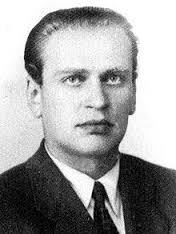 Nosenko (was he affirming the Kennedy-Krushchev ‘common task’ of nonproliferation?) “Nosenko had made his first contact with U.S. officials..on June 3, 1962. That was two days after the Oswalds left the Soviet Union.” p212 footnote, Reasonable Doubt, 1985, by Henry Hurt
Nosenko (was he affirming the Kennedy-Krushchev ‘common task’ of nonproliferation?) “Nosenko had made his first contact with U.S. officials..on June 3, 1962. That was two days after the Oswalds left the Soviet Union.” p212 footnote, Reasonable Doubt, 1985, by Henry Hurt war profiteer John A. McCone, Bechtel-McCone, AEC, CIA, shareholder in Big Oil’s ‘sister’ Standard Oil of California (Socal). Author Anthony Sampson (‘The Seven Sisters’, 1975) said McCone’s “relationship with government has been shrouded in mystery.” p234, The Seven Sisters
war profiteer John A. McCone, Bechtel-McCone, AEC, CIA, shareholder in Big Oil’s ‘sister’ Standard Oil of California (Socal). Author Anthony Sampson (‘The Seven Sisters’, 1975) said McCone’s “relationship with government has been shrouded in mystery.” p234, The Seven Sisters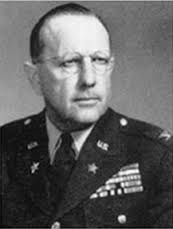 Boris Pash
Boris Pash 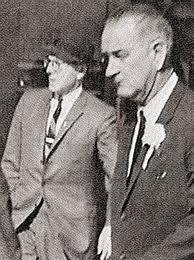 Pash with LBJ at Parkland Hospital –for more images of this ‘unidentified man’ with LBJ see https://jenniferlake.wordpress.com/2017/09/17/jfk-file-pash-at-parkland/
Pash with LBJ at Parkland Hospital –for more images of this ‘unidentified man’ with LBJ see https://jenniferlake.wordpress.com/2017/09/17/jfk-file-pash-at-parkland/ *
* Forrest V. Sorrels, the image on the left, also from a newspaper, was possibly taken on 11-22-63
Forrest V. Sorrels, the image on the left, also from a newspaper, was possibly taken on 11-22-63 “Allen Dulles used to tell his sister that 1953 and 1954 were the good years at the CIA, when everything seemed to be going right and the Agency was his brother’s strong right arm in helping to reshape the world… For the first time, the CIA now had a budget running at over half a billion dollars, and there was no one outside the Agency Allen needed to tell how the money was spent...” [p.323, Dulles, by Leonard Mosley, 1978] “...Never before or since has the CIA had more support from the State Department, or, because Secretary Dulles was so powerful, more freedom to infiltrate U.S…offices in foreign countries. [CIA] had complete freedom to undertake projects of enormous tactical or strategical significance with little or no oversight... [p.364, ibid.]
“Allen Dulles used to tell his sister that 1953 and 1954 were the good years at the CIA, when everything seemed to be going right and the Agency was his brother’s strong right arm in helping to reshape the world… For the first time, the CIA now had a budget running at over half a billion dollars, and there was no one outside the Agency Allen needed to tell how the money was spent...” [p.323, Dulles, by Leonard Mosley, 1978] “...Never before or since has the CIA had more support from the State Department, or, because Secretary Dulles was so powerful, more freedom to infiltrate U.S…offices in foreign countries. [CIA] had complete freedom to undertake projects of enormous tactical or strategical significance with little or no oversight... [p.364, ibid.] The importance of subject matter in Robert Kennedy’s speech mentioned here is that it was RFK’s maiden Senate speech: “Teddy waited fourteen months before making his maiden speech; Bobby made his, a powerful condemnation of nuclear-weapons proliferation, a little more than five months after he was sworn in, earning grumbles from ‘the club’ that it was too soon.” –p116, Good Ted, Bad Ted, by Lester David, 1993
The importance of subject matter in Robert Kennedy’s speech mentioned here is that it was RFK’s maiden Senate speech: “Teddy waited fourteen months before making his maiden speech; Bobby made his, a powerful condemnation of nuclear-weapons proliferation, a little more than five months after he was sworn in, earning grumbles from ‘the club’ that it was too soon.” –p116, Good Ted, Bad Ted, by Lester David, 1993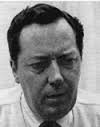 Jim Garrison wrote: “Much later in 1978, James A. Wilcott, a former CIA finance officer, told the House Select Committee on Assassinations that Lee Oswald had been recruited from the military by the CIA ‘with the express purpose of a double agent assignment in the USSR.* [footnoted:] Wilcott testified under oath that he had handled the funding for the project to which Oswald was assigned...” [p.49, On the Trail of the Assassins, 1988]
Jim Garrison wrote: “Much later in 1978, James A. Wilcott, a former CIA finance officer, told the House Select Committee on Assassinations that Lee Oswald had been recruited from the military by the CIA ‘with the express purpose of a double agent assignment in the USSR.* [footnoted:] Wilcott testified under oath that he had handled the funding for the project to which Oswald was assigned...” [p.49, On the Trail of the Assassins, 1988] George deMohrenschildt of the Dallas Petroleum Club, ‘suicided’ March 29, 1977 after meeting with journalist Jay Edward Epstein, the same day he was later scheduled to meet with House Select Committee on Assassinations (HSCA) investigator Gaeton Fonzi, a meeting that never took place.
George deMohrenschildt of the Dallas Petroleum Club, ‘suicided’ March 29, 1977 after meeting with journalist Jay Edward Epstein, the same day he was later scheduled to meet with House Select Committee on Assassinations (HSCA) investigator Gaeton Fonzi, a meeting that never took place.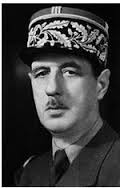 Author and professor Joan Mellen writes, “The most notorious OAS-sponsored effort was the attempted assassination of Charles de Gaulle in 1962. [Guy] Banister operative Tommy Baumler remarked that ‘those who killed John F. Kennedy were those who wanted to kill de Gaulle.’ He was referring to the CIA, Clay Shaw Banister and ..PERMINDEX (Permanent Industrial Exhibition), based in Switzerland.” –p136, A Farewell To Justice, 2005
Author and professor Joan Mellen writes, “The most notorious OAS-sponsored effort was the attempted assassination of Charles de Gaulle in 1962. [Guy] Banister operative Tommy Baumler remarked that ‘those who killed John F. Kennedy were those who wanted to kill de Gaulle.’ He was referring to the CIA, Clay Shaw Banister and ..PERMINDEX (Permanent Industrial Exhibition), based in Switzerland.” –p136, A Farewell To Justice, 2005 former colonial governor of Algeria and French atomic energy minister
former colonial governor of Algeria and French atomic energy minister Ex-FBI New Orleans private detective Guy Banister : In a curious statement to the Louisiana Senate’s Legislative Committee on Segregation in March of 1957, Banister said, “We are particularly vulnerable to smuggled atom bombs. Even the big bombs were comparatively simple to assemble once they were made. Now they have them down to the size of an artillery shell. Dedicated Communist Party members can smuggle them in, leave them. I doubt that we have enough screw drivers and men to use to find them. They can be triggered, set off by a radio wave, or in several other manners. I know that it is possible and comparatively easy to assemble one of them and New Orleans is a key city in the south land…” http://www.mcadams.posc.mu.edu/weberman/nodule11.htm
Ex-FBI New Orleans private detective Guy Banister : In a curious statement to the Louisiana Senate’s Legislative Committee on Segregation in March of 1957, Banister said, “We are particularly vulnerable to smuggled atom bombs. Even the big bombs were comparatively simple to assemble once they were made. Now they have them down to the size of an artillery shell. Dedicated Communist Party members can smuggle them in, leave them. I doubt that we have enough screw drivers and men to use to find them. They can be triggered, set off by a radio wave, or in several other manners. I know that it is possible and comparatively easy to assemble one of them and New Orleans is a key city in the south land…” http://www.mcadams.posc.mu.edu/weberman/nodule11.htm “Spring of 1963 arrived and Lee Oswald– as usual, without fanfare or any other preliminaries– left Dallas in late April for New Orleans. His wife and daughter arrived there shortly afterwards. By May 9 Oswald had obtained a job in New Orleans at the Reily Coffee Company, just on the other side of the post office building from Guy Banister’s office… Now I was interested in taking a closer look at how he found his way to employment at the Reily Coffee Company… Judging by [a] lengthy series of [Warren] Commission exhibits, he had sought employment at half the businesses in the city of New Orleans.” —pp56-57, On The Trail of The Assassins— “…[D.A. investigator] Frank agreed with me on the probability of Oswald’s impersonation in the job applications. What it amounted to, of course, was that Oswald had been destined from the outset to go to work at the Reily Coffee Company, close by Guy Banister’s office. All these applications by someone impersonating him were intended to obscure that.” –p59, ibid.
“Spring of 1963 arrived and Lee Oswald– as usual, without fanfare or any other preliminaries– left Dallas in late April for New Orleans. His wife and daughter arrived there shortly afterwards. By May 9 Oswald had obtained a job in New Orleans at the Reily Coffee Company, just on the other side of the post office building from Guy Banister’s office… Now I was interested in taking a closer look at how he found his way to employment at the Reily Coffee Company… Judging by [a] lengthy series of [Warren] Commission exhibits, he had sought employment at half the businesses in the city of New Orleans.” —pp56-57, On The Trail of The Assassins— “…[D.A. investigator] Frank agreed with me on the probability of Oswald’s impersonation in the job applications. What it amounted to, of course, was that Oswald had been destined from the outset to go to work at the Reily Coffee Company, close by Guy Banister’s office. All these applications by someone impersonating him were intended to obscure that.” –p59, ibid. headed the Oswald investigation for the FBI and allowed his serious “doubt” about Oswald’s guilt to lodge in the journalistic record. Sullivan was “accidently shot” to death on 11-9-77 at his woodsy New Hampshire home, “mistaken for a deer” (while standing on his front porch, they say). He was the FBI’s first Atomic Energy Commission liason officer (beginning 1947, followed by Charles Bates seen below) and contributed to two special study groups for government counter-proliferation strategy after resigning the FBI and before his death. The first special study, sponsored by the AEC, resulted in the Rosenbaum Report of April 1974 which includes the statement that “It is not the AEC’s business to conduct this sort of intelligence [such as infiltration of plutonium smuggling groups], but it is the AEC’s business to see that those agencies of the United States Government which have intelligence gathering responsibilities, including the FBI, CIA, and NSA, focus their attention upon this particular threat…”
headed the Oswald investigation for the FBI and allowed his serious “doubt” about Oswald’s guilt to lodge in the journalistic record. Sullivan was “accidently shot” to death on 11-9-77 at his woodsy New Hampshire home, “mistaken for a deer” (while standing on his front porch, they say). He was the FBI’s first Atomic Energy Commission liason officer (beginning 1947, followed by Charles Bates seen below) and contributed to two special study groups for government counter-proliferation strategy after resigning the FBI and before his death. The first special study, sponsored by the AEC, resulted in the Rosenbaum Report of April 1974 which includes the statement that “It is not the AEC’s business to conduct this sort of intelligence [such as infiltration of plutonium smuggling groups], but it is the AEC’s business to see that those agencies of the United States Government which have intelligence gathering responsibilities, including the FBI, CIA, and NSA, focus their attention upon this particular threat…” Jim Garrison came across the likes of “CIA asset” Gordon Novel after learning about a “munitions raid” by the FBI back in [July 31 and] August of 1963, shown to him as front-page New Orleans news items by investigator Frank Klein. Garrison wrote, “So, some ammunition had been found north of Lake Pontchartrain…There had been no announcement of any arrests. I pushed the news story off to the side. Later I would recall having almost tossed away a major lead…” (p36, On the Trail of the Assassins)
Jim Garrison came across the likes of “CIA asset” Gordon Novel after learning about a “munitions raid” by the FBI back in [July 31 and] August of 1963, shown to him as front-page New Orleans news items by investigator Frank Klein. Garrison wrote, “So, some ammunition had been found north of Lake Pontchartrain…There had been no announcement of any arrests. I pushed the news story off to the side. Later I would recall having almost tossed away a major lead…” (p36, On the Trail of the Assassins)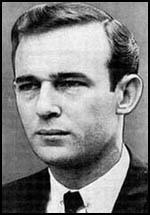 Gordon Novel, who participated in a weapons transfer from a Schlumberger bunker two years before the FBI raid, was in the “[Guy] Banister apparatus, as [Jack] Martin described it, .. part of a supply line that ran along the Dallas-New Orleans-Miami corridor. These supplies consisted of arms and explosives for use against Castro’s Cuba. The security control was so careful that ammunition was kept far-flung in outlying areas. Dispersal was the rule. On the occasions when such explosives were held in New Orleans only small amounts were kept at Banister’s office at any one time.” (p40, ibid.)
Gordon Novel, who participated in a weapons transfer from a Schlumberger bunker two years before the FBI raid, was in the “[Guy] Banister apparatus, as [Jack] Martin described it, .. part of a supply line that ran along the Dallas-New Orleans-Miami corridor. These supplies consisted of arms and explosives for use against Castro’s Cuba. The security control was so careful that ammunition was kept far-flung in outlying areas. Dispersal was the rule. On the occasions when such explosives were held in New Orleans only small amounts were kept at Banister’s office at any one time.” (p40, ibid.) * Dr. Alton Ochsner, apparently a supporter of Catholic Cuban Relief, was a nationally prominent physician then teaching at Tulane University in New Orleans. He was one of a small clique of medical lobbyists belonging to the Lasker Group, originally founded by Albert and Mary Lasker, seeking to expand the National Institutes of Health and take control of the American Cancer Society.
* Dr. Alton Ochsner, apparently a supporter of Catholic Cuban Relief, was a nationally prominent physician then teaching at Tulane University in New Orleans. He was one of a small clique of medical lobbyists belonging to the Lasker Group, originally founded by Albert and Mary Lasker, seeking to expand the National Institutes of Health and take control of the American Cancer Society.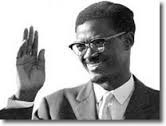 Patrice Lumumba, died by CIA-assisted assassination January 17, 1961: “Apparently what happened is that this [CIA] man William Harvey..recruited someone by the codename QJ/WIN to assassinate Lumumba… [Harvey] was supposed to recruit people from the underworld..[and] suggested using..Corsicans… They didn’t want to bring in the [Sicilian] Mafia because [CIA] were protecting [them] as payback for their help… [Harvey] hired this man QJ/WIN on November 1, 1960 in Frankfurt for the Lumumba operation.” http://www.counterpunch.org/2005/01/29/tempelsman-s-man-weighs-in-on-the-murder-of-patrice-lumumba/
Patrice Lumumba, died by CIA-assisted assassination January 17, 1961: “Apparently what happened is that this [CIA] man William Harvey..recruited someone by the codename QJ/WIN to assassinate Lumumba… [Harvey] was supposed to recruit people from the underworld..[and] suggested using..Corsicans… They didn’t want to bring in the [Sicilian] Mafia because [CIA] were protecting [them] as payback for their help… [Harvey] hired this man QJ/WIN on November 1, 1960 in Frankfurt for the Lumumba operation.” http://www.counterpunch.org/2005/01/29/tempelsman-s-man-weighs-in-on-the-murder-of-patrice-lumumba/![DagH [1]](https://jenniferlake.files.wordpress.com/2015/03/dagh-1.jpg?w=183&h=300) Sweden’s UN Secretary General, then residing in NYC, died in a mysterious plane crash on September 18, 1961, on his way to negotiate a ceasefire on behalf of Tshombe’s Katanga. Sweden too, uncoincidentally, was seeking to acquire atomic bombs and join the Nuclear Club.
Sweden’s UN Secretary General, then residing in NYC, died in a mysterious plane crash on September 18, 1961, on his way to negotiate a ceasefire on behalf of Tshombe’s Katanga. Sweden too, uncoincidentally, was seeking to acquire atomic bombs and join the Nuclear Club.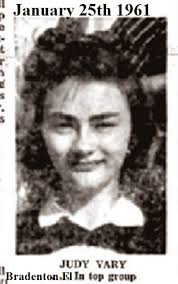 Judyth, Lee Oswald’s 1963 summer girlfriend, attests to the gunrunning she herself participated in helping to unload weapons shipped to NOLA’s waterfront in crates of bananas and furniture.
Judyth, Lee Oswald’s 1963 summer girlfriend, attests to the gunrunning she herself participated in helping to unload weapons shipped to NOLA’s waterfront in crates of bananas and furniture. Particle accelerator designer/builder and Manhattan Project veteran Luis Alvarez lent his formidable authority as a physicist to the Warren Commission, affirming its conclusions. Next to Leo Szilard and Ernest O. Lawrence, Alvaraz was the beneficiary of a privileged relationship with Adm. Lewis Strauss.
Particle accelerator designer/builder and Manhattan Project veteran Luis Alvarez lent his formidable authority as a physicist to the Warren Commission, affirming its conclusions. Next to Leo Szilard and Ernest O. Lawrence, Alvaraz was the beneficiary of a privileged relationship with Adm. Lewis Strauss. David Ferrie, ‘suicided’ on the fifth day after the NOLA States-Item announced the Garrison probe on Feb.17, 1967.
David Ferrie, ‘suicided’ on the fifth day after the NOLA States-Item announced the Garrison probe on Feb.17, 1967. was 100% certain that the odd-looking man he overheard in the Winnipeg Airport lounge was David Ferrie, as told to author/journalist Paris Flammonde.
was 100% certain that the odd-looking man he overheard in the Winnipeg Airport lounge was David Ferrie, as told to author/journalist Paris Flammonde.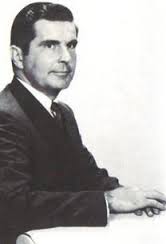 described as the Dallas FBI ‘handler’ of Oswald, was transferred to Kansas City Missouri after the issuance of the Warren report (but transferred later, in 1965):
described as the Dallas FBI ‘handler’ of Oswald, was transferred to Kansas City Missouri after the issuance of the Warren report (but transferred later, in 1965):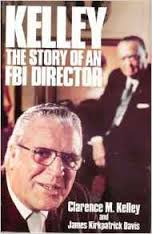 Far from an FBI agent’s wasteland, Chief Kelley, installed in 1961 on the recommendation of Atty. Gen. Robert Kennedy, innovated and updated policing there to a national model. After Watergate, and following the resignation of the hapless Patrick Gray, Kelley became Director of the FBI on Nixon’s final appointment to the post.
Far from an FBI agent’s wasteland, Chief Kelley, installed in 1961 on the recommendation of Atty. Gen. Robert Kennedy, innovated and updated policing there to a national model. After Watergate, and following the resignation of the hapless Patrick Gray, Kelley became Director of the FBI on Nixon’s final appointment to the post. Professor Scott uses an example of a dual agent in the person of Robert C. Ronstadt who “went to work for a Los Angeles firm, Allied Records, that was concerned about possible Communist employees. At the same time, Ronstadt began to sell subscriptions to the Communist Daily People’s World, and after some months he became a Communist Party member in the spring of 1947. Ronstadt, who had originally passed his FBI entrance exam in 1942, later explained…that his job had been to smoke out potential Red sympathizers. His actual employer was the private investigative firm of [McCarthy and Dunn], industrial security consultants to Allied Records… After Ronstadt succeeded in joining the Communist party, he ceased to work for McCarthy and Dunn, and for the first time was paid directly by the FBI as an informant. [p244]
Professor Scott uses an example of a dual agent in the person of Robert C. Ronstadt who “went to work for a Los Angeles firm, Allied Records, that was concerned about possible Communist employees. At the same time, Ronstadt began to sell subscriptions to the Communist Daily People’s World, and after some months he became a Communist Party member in the spring of 1947. Ronstadt, who had originally passed his FBI entrance exam in 1942, later explained…that his job had been to smoke out potential Red sympathizers. His actual employer was the private investigative firm of [McCarthy and Dunn], industrial security consultants to Allied Records… After Ronstadt succeeded in joining the Communist party, he ceased to work for McCarthy and Dunn, and for the first time was paid directly by the FBI as an informant. [p244]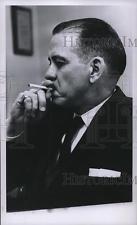 Supervising the would-be atomic agents in the dual FBI/AEC start-up was FBI agent and Dallas, Texas native Charles W. Bates, born in the north suburb of Lewisville along with his twin brother. The Bateses were close family friends of Texas congressman Sam Rayburn and the boys looked on him as a second father, according to author Priscilla McMillan in The Ruin of J. Robert Oppenheimer, a fact which impressed J. Edgar Hoover. Charles Bates’s maternal aunt was Sam Rayburn’s secretary, Alla Clary, who was well-known in Washington D.C. and a local celebrity in her hometown of McKinney Texas.
Supervising the would-be atomic agents in the dual FBI/AEC start-up was FBI agent and Dallas, Texas native Charles W. Bates, born in the north suburb of Lewisville along with his twin brother. The Bateses were close family friends of Texas congressman Sam Rayburn and the boys looked on him as a second father, according to author Priscilla McMillan in The Ruin of J. Robert Oppenheimer, a fact which impressed J. Edgar Hoover. Charles Bates’s maternal aunt was Sam Rayburn’s secretary, Alla Clary, who was well-known in Washington D.C. and a local celebrity in her hometown of McKinney Texas.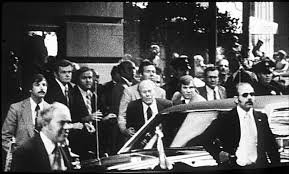 *
* Sara Jane Moore, FBI-informant-turned-presidential-assassin — “Moore’s attempt to kill Ford was part of a string of bizarre crimes in Northern California.” http://www.sfgate.com/news/article/Sara-Jane-Moore-who-tried-to-kill-Ford-in-75-3232286
Sara Jane Moore, FBI-informant-turned-presidential-assassin — “Moore’s attempt to kill Ford was part of a string of bizarre crimes in Northern California.” http://www.sfgate.com/news/article/Sara-Jane-Moore-who-tried-to-kill-Ford-in-75-3232286 Is that Godzilla!? –no, it’s detonation Castle-Bravo: “This radiological calamity had a significant impact on world opinion and helped spark the movement for a nuclear test moratorium which ultimately led to the 1963 Limited Test Ban Treaty… Until recently, an extensive collection of documents on nuclear testing in the Marshall Islands was readily available on a Department of Energy website: The Marshall Islands Document Collection. It no longer has an online presence. In the fall of 2013, at the time of the U.S. government shutdown, this important collection disappeared from the web.”http://www.nsarchive.gwu.edu/nukevault/ebb459/
Is that Godzilla!? –no, it’s detonation Castle-Bravo: “This radiological calamity had a significant impact on world opinion and helped spark the movement for a nuclear test moratorium which ultimately led to the 1963 Limited Test Ban Treaty… Until recently, an extensive collection of documents on nuclear testing in the Marshall Islands was readily available on a Department of Energy website: The Marshall Islands Document Collection. It no longer has an online presence. In the fall of 2013, at the time of the U.S. government shutdown, this important collection disappeared from the web.”http://www.nsarchive.gwu.edu/nukevault/ebb459/ a.k.a. John Howard Bowen, born and raised in England, had only one clearly traceable residence-location from where he came and went in the United States in Knoxville Tennessee, the nearest city to the Manhattan Project’s Oak Ridge Facility. It may even be that Albert Osborne adopted his second identity as Bowen in Knoxville in 1943 as Oak Ridge was being built and inhabited. Bowen was said to have left Knoxville after the summer of ’43. Over a ten year period beginnng in 1953, “Bowen” infrequently but occasionally announced his status as a missionary in Mexico through articles sent to the Knoxville Journal. Osborne later took refuge in Knoxville again in 1964 to escape hounding by the FBI according to his anonymous friends. The FBI at least caught up with Osborne in Nashville in March of ’64 for what was his third and last interview with the FBI. After this he was officially written off as a con man and witnesses were told to forget about him. He died in San Antonio, Texas in 1966 at age 77, believed to be caused by food poisoning.
a.k.a. John Howard Bowen, born and raised in England, had only one clearly traceable residence-location from where he came and went in the United States in Knoxville Tennessee, the nearest city to the Manhattan Project’s Oak Ridge Facility. It may even be that Albert Osborne adopted his second identity as Bowen in Knoxville in 1943 as Oak Ridge was being built and inhabited. Bowen was said to have left Knoxville after the summer of ’43. Over a ten year period beginnng in 1953, “Bowen” infrequently but occasionally announced his status as a missionary in Mexico through articles sent to the Knoxville Journal. Osborne later took refuge in Knoxville again in 1964 to escape hounding by the FBI according to his anonymous friends. The FBI at least caught up with Osborne in Nashville in March of ’64 for what was his third and last interview with the FBI. After this he was officially written off as a con man and witnesses were told to forget about him. He died in San Antonio, Texas in 1966 at age 77, believed to be caused by food poisoning. *
* , Los Alamos(1949-1956), General Atomics, Project Orion (nuclear spaceship)
, Los Alamos(1949-1956), General Atomics, Project Orion (nuclear spaceship) “By 1960, he had made more than $100 million from uranium.” http://www.tabletmag.com/jewish-arts-and-culture/11212/hirshhorn-of-plenty
“By 1960, he had made more than $100 million from uranium.” http://www.tabletmag.com/jewish-arts-and-culture/11212/hirshhorn-of-plenty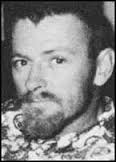 –another strange character involved with “Oswald” who was arrested Dec. 8, 1963 in Tangiers Morocco. At the time of his arrest, Davis was carrying a letter in his own hand referring to Oswald and the JFK assassination. The addressee was lawyer Thomas G. Proctor, an original board member of the American-Canadian Uranium Co. Ltd.
–another strange character involved with “Oswald” who was arrested Dec. 8, 1963 in Tangiers Morocco. At the time of his arrest, Davis was carrying a letter in his own hand referring to Oswald and the JFK assassination. The addressee was lawyer Thomas G. Proctor, an original board member of the American-Canadian Uranium Co. Ltd.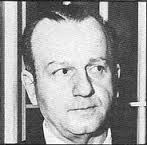 * Ruby’s relationship with Davis allegedly began prior to a 1959 deal on which they collaborated to buy and ship jeeps to aid Castro in Cuba.
* Ruby’s relationship with Davis allegedly began prior to a 1959 deal on which they collaborated to buy and ship jeeps to aid Castro in Cuba. employer of Robert E. Webster, photographed here in 1967 at the US District Court in Cleveland after the court “imposed as tough a ban as the law allows on further experimentation with the so-called Rand anti-cancer vaccine. H. James Rand and his Rand Development Corp. were permanently enjoined and restrained from manufacture and shipment of the vaccine, and even from further animal experimentation…” http://content.time.com/time/magazine/article/0,9171,836753,00.html
employer of Robert E. Webster, photographed here in 1967 at the US District Court in Cleveland after the court “imposed as tough a ban as the law allows on further experimentation with the so-called Rand anti-cancer vaccine. H. James Rand and his Rand Development Corp. were permanently enjoined and restrained from manufacture and shipment of the vaccine, and even from further animal experimentation…” http://content.time.com/time/magazine/article/0,9171,836753,00.html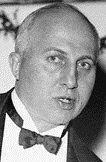
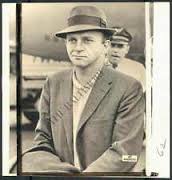 Robert E. Webster likely did not work for James Rand III beyond the expedient of getting into the USSR:
Robert E. Webster likely did not work for James Rand III beyond the expedient of getting into the USSR:
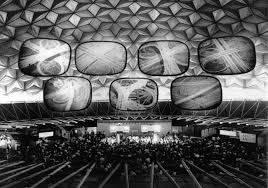
 First of its kind and a very important event in U.S-Soviet relations. Milton Eisenhower, Krushchev, and Nixon cut the ribbon on opening day, July 24, 1959. Exhibits included displays shown earlier at the 1958 World’s Fair in Belgium.
First of its kind and a very important event in U.S-Soviet relations. Milton Eisenhower, Krushchev, and Nixon cut the ribbon on opening day, July 24, 1959. Exhibits included displays shown earlier at the 1958 World’s Fair in Belgium.

